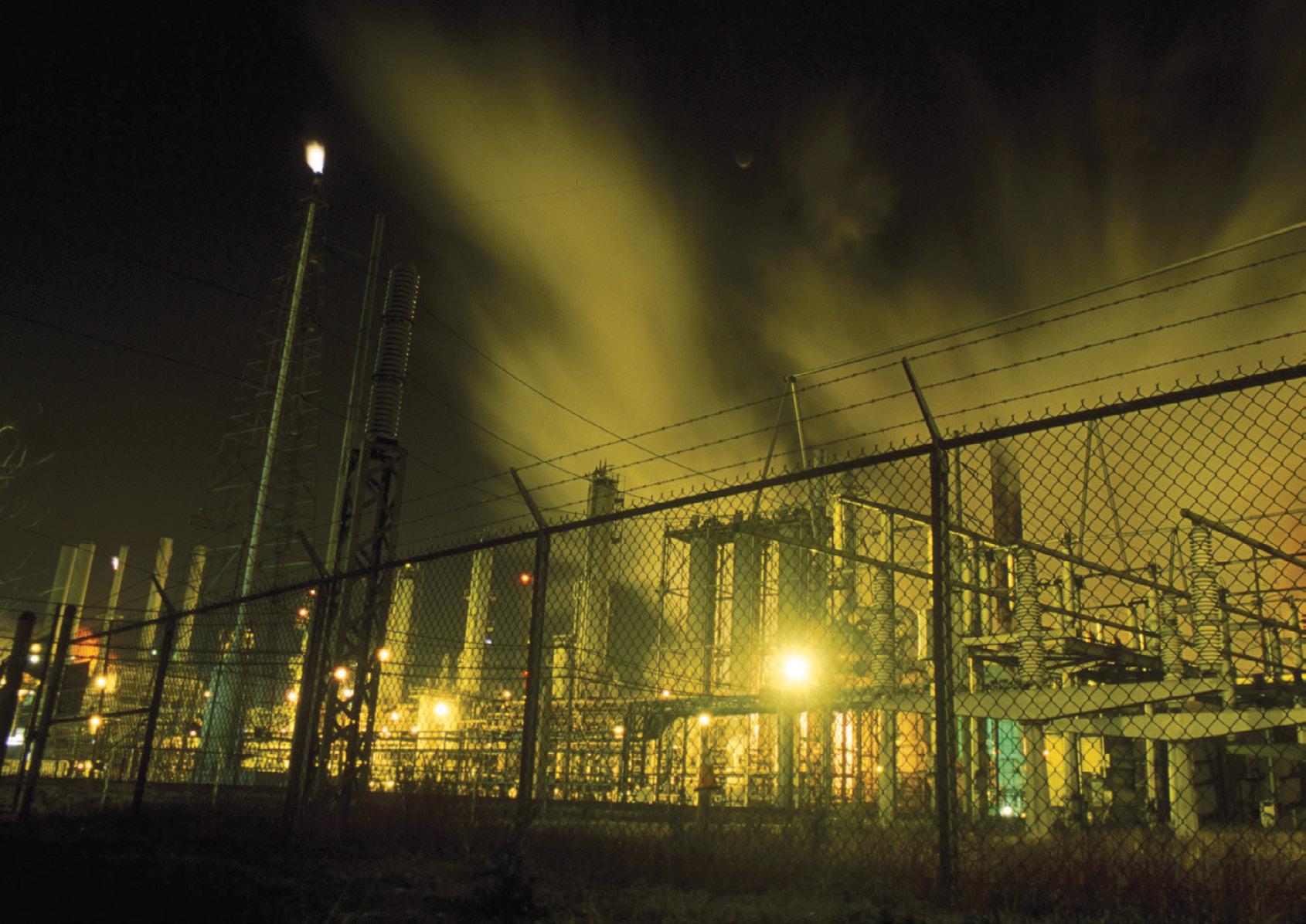

EVERY BREATH YOU TAKE
Air Pollution Risks from Petrochemicals Production for the Plastics Supply Chain
Every Breath You Take: Air Pollution Risks from
Petrochemicals
Production for the Plastics Supply Chain
Authors and contributors: Ali Abbas, Abigail Aguilar, Jeffrey Albertson-Kwok, Miao Chien, Madeleine Cobbing, Aidan Farrow, Graham Forbes, Lea Gajewski, Ana Hristova, Angel Pago, Jiao Wang, Anna Wells, Coco Wu.
We would like to thank the reviewers from different Greenpeace National and Regional Offices who helped review the report.
Design: Roma Pilar
Cover picture: Night view of a chemical plant in New Sarpy, Louisiana.
© Greenpeace / Les Stone Greenpeace is an independent global campaigning organisation that acts to change attitudes and behaviour, to protect and conserve the environment and to promote peace. Published by: Greenpeace International Greenpeace International Surinameplein 118 1058 GV Amsterdam Netherlands +31 20 718 2000 +31 20 718 2002 info.int@greenpeace.org greenpeace.org/international
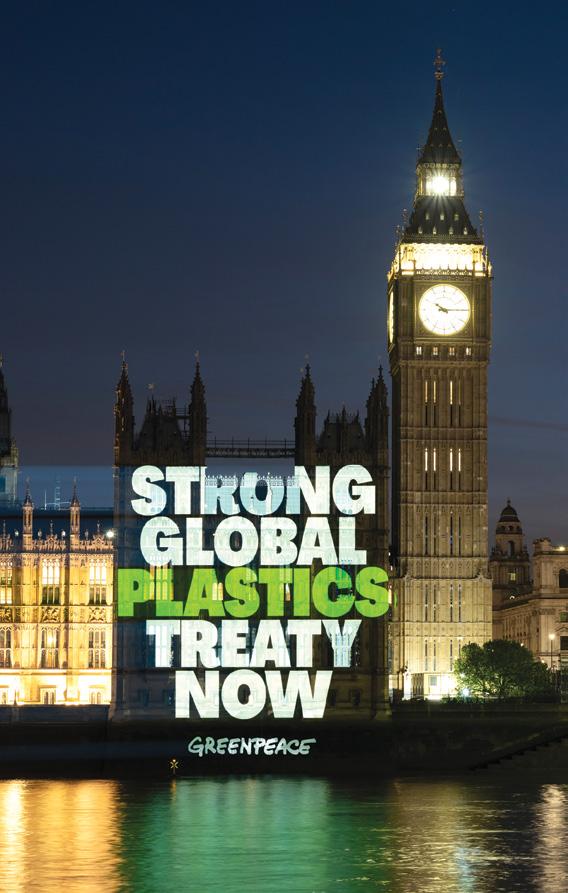
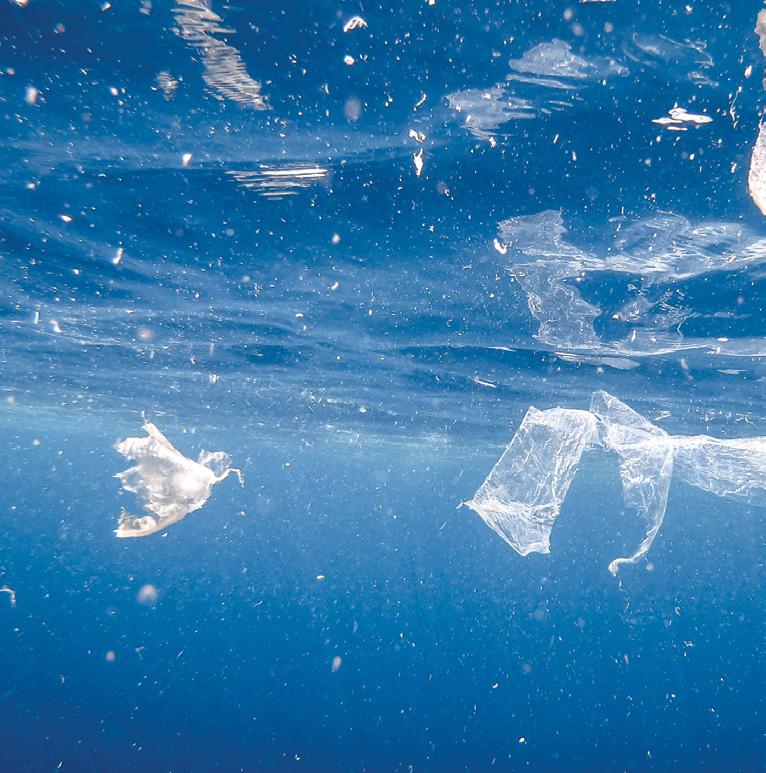
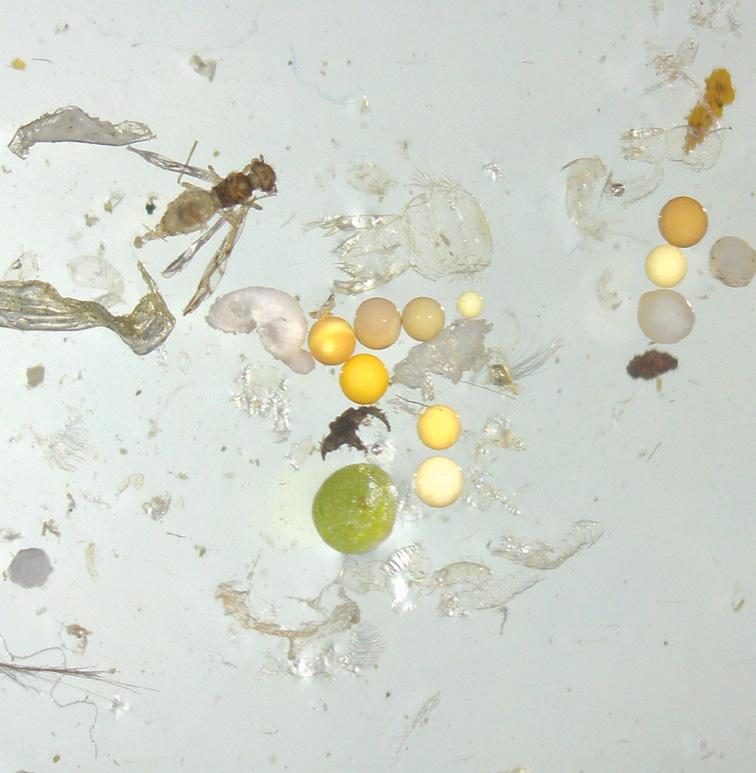

Plastic rubbish in Tremiti Islands. Part of the research activities and samples collection conducted by Greenpeace Italy to monitor pollution by plastics and microplastics in the Adriatic Sea. © Greenpeace / Francesco Alesi
Microplastics under the microscope from water samples taken by Greenpeace from the River Rhine. © Greenpeace
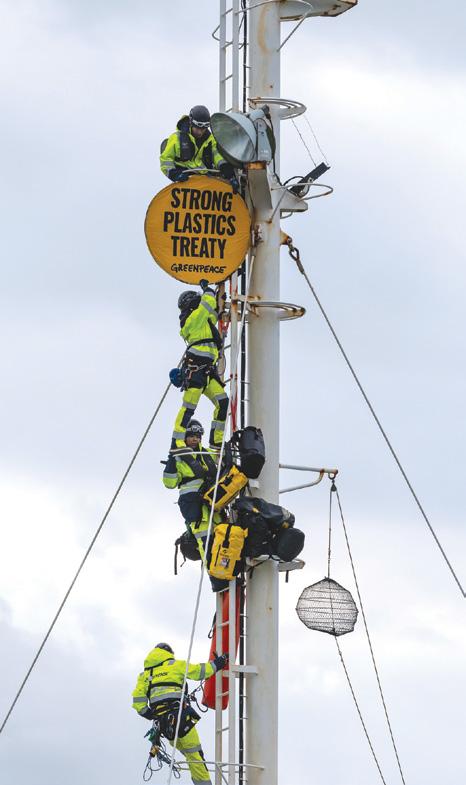
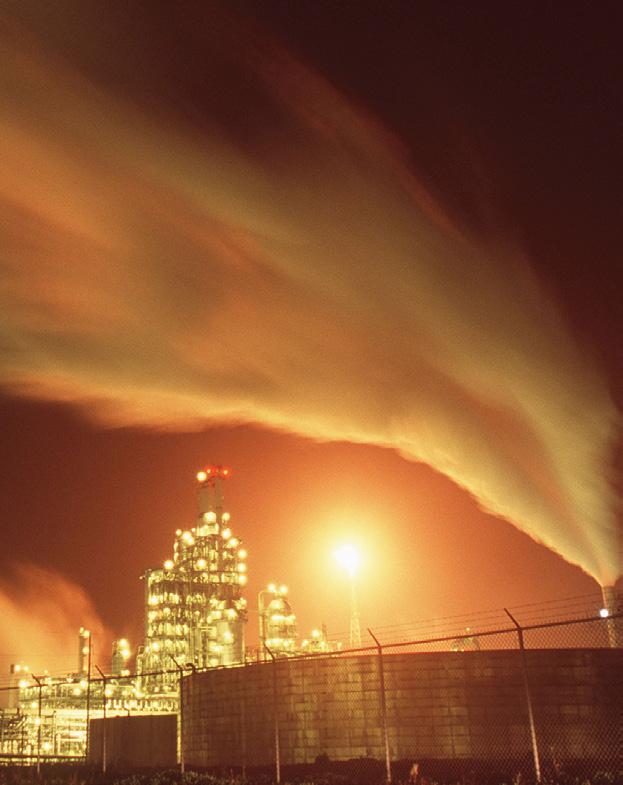
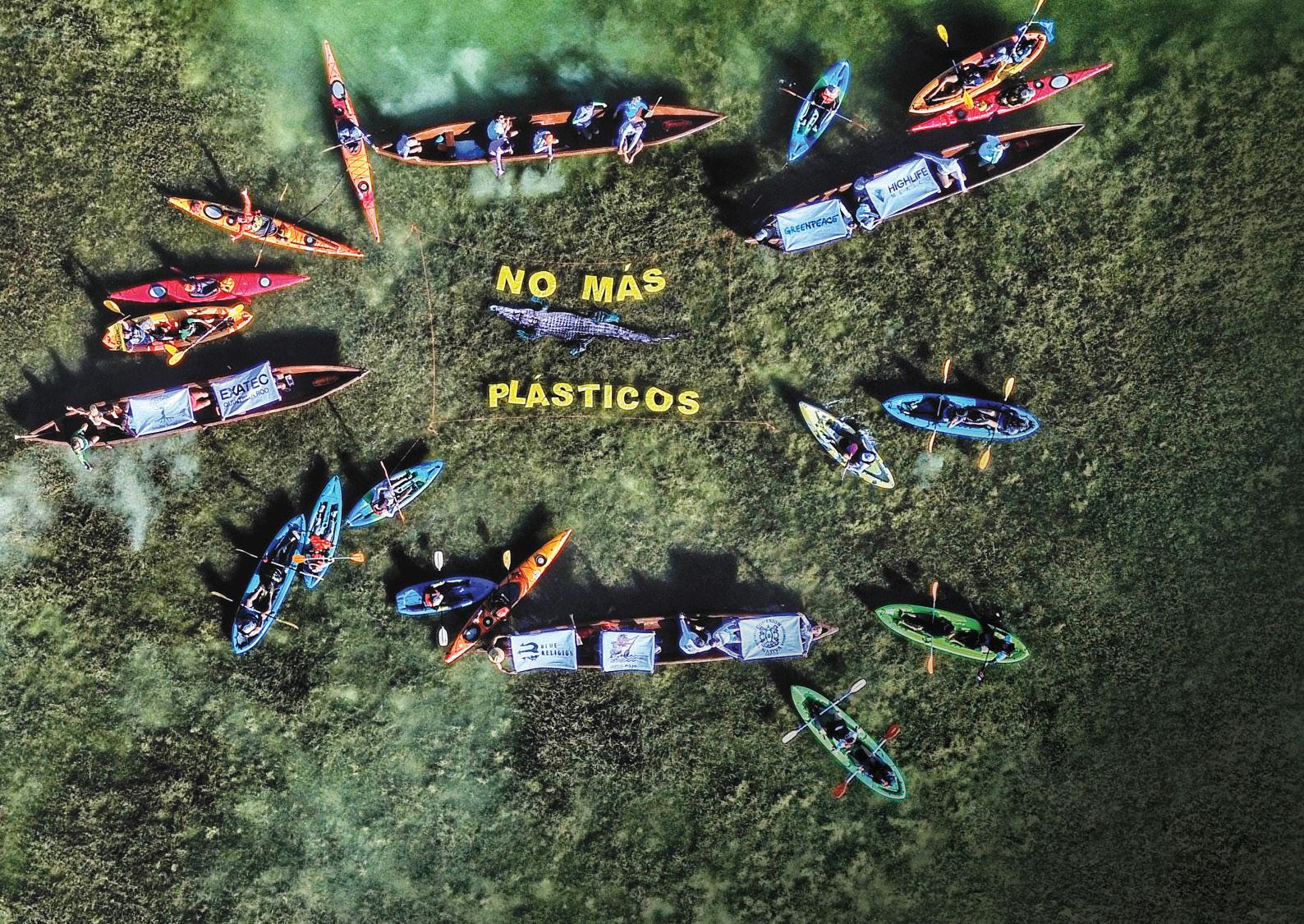
Environmental activists in kayaks show the message “No more plastics” in a crocodile shape in Nichupté Lagoon in Cancún, Mexico.
© Greenpeace / Paola Chiomante
SUMMARY
The focus on plastic waste and its breakdown into microplastics is vital, and the necessary imperative for a strong agreement at the upcoming Global Plastics Treaty in Geneva. The increasing volumes of plastic being produced are driving the scale of the plastics waste crisis, but this is only one aspect of the devastating impacts of plastic. Greenpeace International decided to look upstream, at the production of plastics and the risk to people living nearby from exposure to hazardous air pollutants.
Key findings for the 11 countries in our air pollution study:
Living near petrochemical sites is a risk factor for health: The study reviewed scientific literature and found a substantial body of evidence that links living within 10 km of a petrochemical production facility to population health risks from air pollution.
Millions are at risk of exposure: Across the study area’s 11 countries, the analysis found that over 16 million people reside within 5 km of a petrochemical production facility linked to the plastics value chain. This figure increases to over 51 million people when considering a distance of 10 km.
People live side by side with petrochemicals: in all of the 11 focus countries, residential areas exist within 10km of the production of petrochemicals for the plastics value chain.
Country with the highest proportion of people at risk of exposure: The highest proportion of the population estimated to be living within 10km of plastics-linked petrochemical production sites is in The Netherlands , with approximately 4.5 million people out of a total population of nearly 18 million, or 1 in 4 people (25.6%).
The country with the second highest proportion is Switzerland at 10.9% of the population.
Country with the highest number of people at risk of exposure: The US has the largest number of people estimated to be living within 10km of a petrochemical production facility, with over 13 million people, an exposure risk which is concentrated in Texas and Louisiana.
Air pollution knows no borders: Border zone areas in Canada, Germany, Malaysia, the Netherlands, Switzerland, and the United States contain petrochemical production facilities located within 10 kilometers of neighbouring countries
Sacrifice zones: Case studies provide strong evidence that people living near to petrochemical production linked to plastics suffer higher rates of illness (including cancer and respiratory conditions) with some so extreme that they have been described as “ sacrifice zones” by the UN.
Expansion of petrochemicals: the planned expansion for plastics production to the year 2050 will lead to even greater emissions of these hazardous air pollutants globally: if allowed to happen, this could expose millions more people to the risk of exposure and create new sacrifice zones.
Expansion of plastics - and waste: much of this expansion in plastics is to make short life items like single use plastic packaging or fast fashion, which is on track to increase massively by 2050, driving the plastics waste crisis and subjecting low-income countries to decades of more waste colonialism.
We therefore need a strong Global Plastics Treaty, that cuts plastic production by at least 75% by 2040 to protect our health, our communities and planet. Ending plastic pollution can only be achieved by tackling the production of plastics, which is the root of the plastics waste crisis. We must finally limit and phase down plastics production and address the ever-growing, reckless production of plastics driven by the fossil fuel industry.
PLASTICS — CRISIS AND OPPORTUNITY
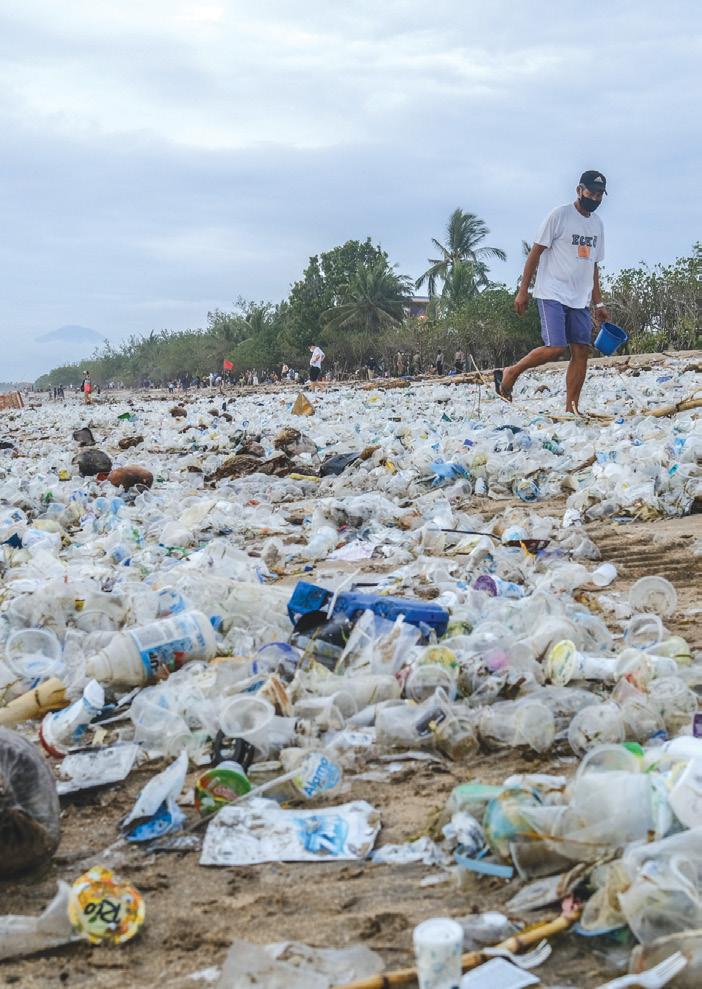
Kuta beach that is buried by plastic rubbish in Denpasar, Bali. Bali’s beaches are being strewn by plastic rubbish which is becoming an annual event due to the monsoon weather, poor waste management and a global marine pollution crisis. © Greenpeace / Made Nagi
1.1 The plastics problem –is not only plastic waste
We’re all used to seeing images of the flood of plastic waste overwhelming rivers and seas in the global South, entangling wildlife and filling their stomachs with this non-degradable product of the fossil fuel industry, instead of food. Even so, the true scale of the plastic waste and pollution problem is not even visible – broken-down plastic becomes microplastic, which is infiltrating ecosystems in the ocean and also the land, and has recently been found in the faeces of land-based mammals in Taiwan, Hong Kong and most recently Switzerland.1 Microplastics can be found everywhere, from remote and pristine areas to our own homes and even in our bodies.
Yet this is only one aspect of the devastating impacts of plastic. Well before discarded plastic finds its way to a dumpsite, or into rivers and seas, hazardous chemicals used in plastics production and climate damaging gases are poisoning people and the natural world, or contributing to runaway climate change, with nature, people and society bearing the costs.
The process of making plastic goes through three stages, starting with the extraction of fossil fuel from the ground and its refining. Petrochemical production is the second stage, a complex, energy-intensive process which transforms refined fossil fuels into synthetic polymers. The high energy demand and chemical throughput mean that petrochemical production has significant environmental and public health impacts. 2
One of the most significant of these impacts on public health is air pollution from the cocktail of gases released on a routine basis from petrochemical plants, including hazardous Volatile Organic Compounds (VOCs). The health effects of these pollutants on people living nearby are well documented. This report estimates how many people living near to petrochemical plastics plants could be impacted by this pollution. 3
Petrochemicals production for plastics CASES OF CONCERN
Plastics for Nestlé, Coca-Cola and Pepsico tied to Texas fracking
Research has directly linked plastic packaging for more than 25 major consumer brands including Nestlé, Coca-Cola and Pepsico to fracking operations in the Permian Basin in Texas, a “carbon bomb” known for severe water pollution. The study, by CIEL and Stand.earth,4 reveals that petrochemical giants like INEOS (Europe’s largest plastic producer) and Reliance Industries are importing ethane, a fracking byproduct, from the US, which is used to create the building blocks for plastics like polyethylene and PET, highlighting a highly concentrated supply chain. Stand.earth’s supply chain visualiser connects INEOS and Reliance Industries indirectly to Nestlé, based in Switzerland, where the negotiations for the Global Plastics Treaty will be taking place in August 2025. 5
The research exposes the toxic supply chain behind global plastic production, and reveals the critical players driving the plastics and climate crises. This reliance on cheap fracked gas is driving an increase in plastic production despite growing environmental concerns and consumer desire for less plastic, raising questions about accountability for the resulting climate emissions, pollution, and environmental justice issues in communities near both extraction sites and petrochemical plants.
Plastics - fuelling the expansion of oil and petrochemicals
Despite the growing plastics crisis, there’s no sign that plastics production will slow down. While other markets like energy are declining, the fossil fuel industry is betting on plastics to keep growing; plastics are set to drive more than a third of the growth in oil demand by 2030, and nearly half by 2050.6
The production of plastics is a significant part of petrochemicals production. If the production of fertiliser is excluded, plastics make up 63% of global petrochemical output as of 2018.7 With petrochemicals taking an increasing share of global oil demand, a huge expansion of petrochemical production capacity is forecast, with over 60% of this oil demand growth taking place in Asia between now and 2050. 8
The production of plastics is also projected to increase massively. Around half of all plastics produced have been made in the 13 years between 2004 and 2017,10 and their global production is projected to increase by between 1.6 - 2.5 times by 2050 from 2019, reaching between 735 Mt to 1124 Mt.11 The biggest single end use for plastic is packaging, which is projected to grow the most, from 39.9 Mt in 1990 to 236.3 Mt in 2050.12 Such volumes of packaging would have a disastrous environmental and health impact both from its production13 and as a result of increased volumes of plastic waste. If current trends continue, the amount of plastic flowing into the ocean is projected to nearly triple to 29 million metric tons by 2040.14 Even with the best possible management and prevention strategies, the amounts reaching the environment would still be huge.15
Plastic packaging makes up 36% of all plastics, but it is not the only use of plastic with a disposability problem. Textiles, with the third largest use at 15%, is a sector that has become dependent on plastic fibres, in particular polyester (PET).16 Not only has this driven the enormous growth of fast fashion since the 2000’s – projected to continue at the same rate – this plastic fashion trend is driving demand for PET.17 Meanwhile, huge quantities of unusable plastic fast fashion waste are accumulating in dumps in the global South and washed into waterways and the ocean, where they break down into microplastic fibres – to add to the vast amounts of plastic packaging and microplastics.18
For every tonne of additional plastic made in this “expansion as usual” scenario, there is a risk that increasing volumes of hazardous pollutants will escape from any new petrochemical capacity. The projected increase in PVC alone, the most hazardous of all the forms of plastic, from 50 MT/y in 2020 to over 125 MT/y by 2050,19 is an alarming prospect. PVC is made with the highly hazardous and carcinogenic vinyl chloride, a source of volatile hazardous chemical emissions to air and water during its production.20 Like all plastics, PVC also poses problems at the end of its life; in addition, if it is burnt, it can release toxic, persistent and bioaccumulative by-products like dioxin.21 It’s already a problem, we should be reducing this, not multiplying it .
Figure 1: Projected increase in oil demand for petrochemicals, including for plastics production9
These are just three of the drivers of the plastics and petrochemicals problem – which have also been the subject of numerous campaigns and investigations by civil society groups over decades. We have a once-in-ageneration chance to act, to change course and end the Age of Plastic.
2: Projected increase in the use of all plastics, including plastic packaging, by 2050, Mt22
A Greenpeace team carries out infrared scans of textile waste at a landfill site near Mortuary Road, Accra, Ghana, finding that almost all (89%) are made with fossil fuel based plastic fibres. Fast fashion waste from second-hand clothes exported from global North countries pollutes the environment in global South countries like Ghana, one of the world’s largest destinations for second-hand clothes, at around 120,000 tonnes a year. Nearly half are inferior disposable items made with plastic, with no resale value. © Greenpeace / Kevin McElvaney
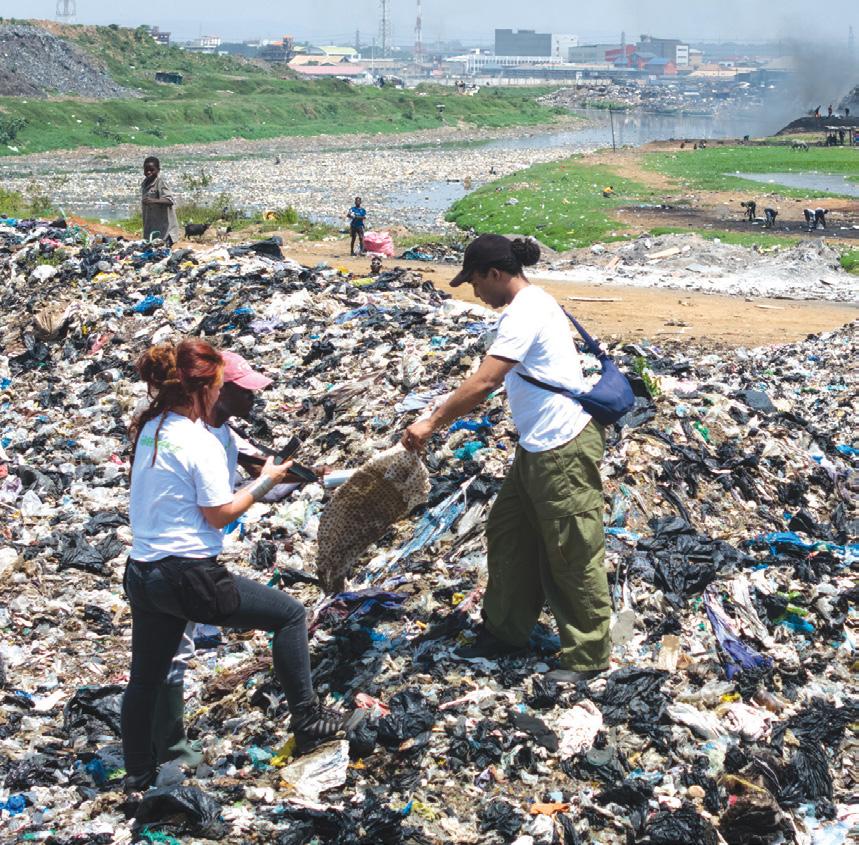
Figure
Petrochemicals production for plastics CASES OF CONCERN
Expansion: US fracked shale gas to Europe, and in US sacrifice zones
UK-based Ineos plans to build the biggest petrochemical plant in Europe for 30 years in Antwerp, Belgium, already a key production centre for plastics in Europe and source of air emissions and plastic pollution from pellets. 23
The plant will import fracked shale gas from the US and is set to significantly boost plastic production, already by far the largest industrial oil, gas and electricity user in the EU. The UK government is controversially providing a €700m guarantee to the plan, known as “Project One”, to the billionaire owner of Ineos, Jim Ratcliffe, despite being labelled a “carbon bomb” by campaigners and acknowledged by the UK government for its adverse climate, environmental, and health impacts. Environmental NGOs are launching a legal challenge, criticizing the UK’s financial support, which exceeds its climate adaptation aid to developing nations, as hypocritical given global efforts to curb plastic pollution and the project’s high carbon footprint, despite Ineos’s claims of future carbon neutrality. 24
In the USA, over 120 new petrochemical projects are planned across the country as the fossil fuel industry expands plastics production to offset energy transition losses. 25 This expansion is in areas of the US where there are low income, black and brown, Indigenous Peoples and other marginalised communities, mostly in Texas, Louisiana, Ohio and Pennsylvania. 26 At least 19 new fossil fuel and petrochemical plants are planned for Louisiana, including within many of the same areas already severely impacted by pollution, known as “Cancer Alley” (see case study below)27 despite the extreme violation of human rights, and decades of campaigning for justice which has exposed insufficient and poorly enforced regulations.
The plans for fossil fuel and petrochemicals expansion will rely on emerging markets in Asia and Africa for the growth in demand for plastics, although some question whether this is realistic. 28
Ineos and Braskem oil facilities in La Porte, Texas. As upstream profits in oil and gas production have declined, the fossil fuel industry has increasingly invested in petrochemical divisions as a potential bright spot, citing low price ethane feedstocks generated from the US fracking boom and increased demand for single-use plastics in the consumer goods sector.
© Greenpeace / Aaron M. Sprecher
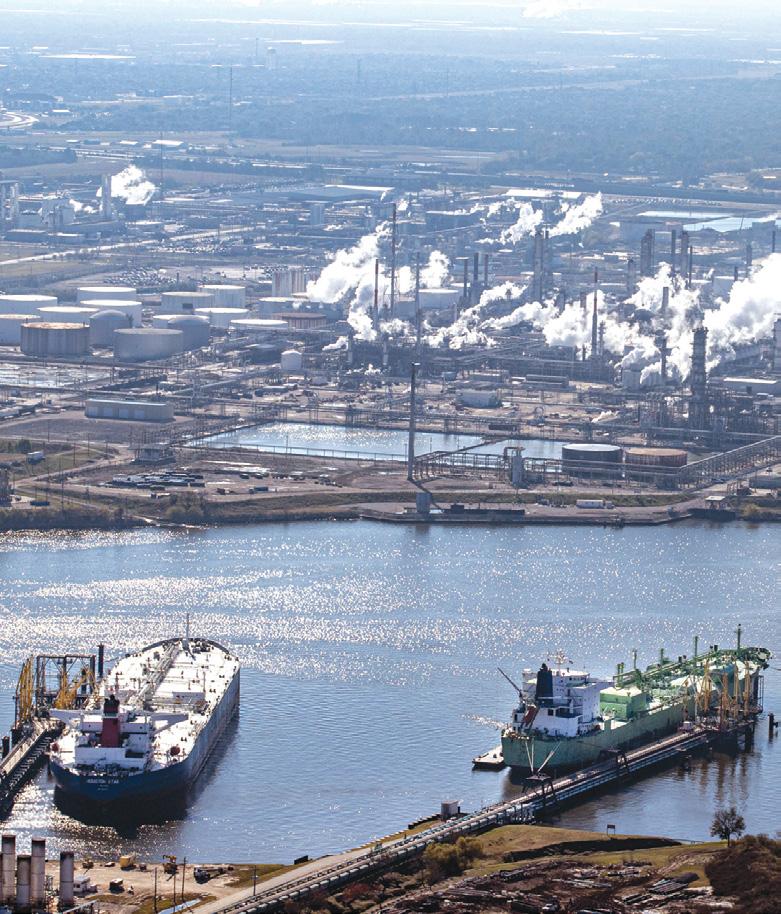
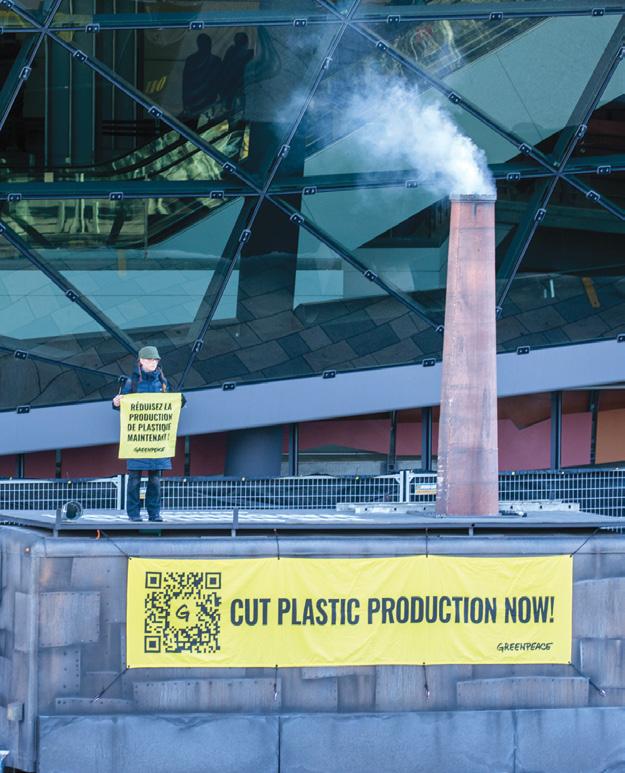
1.2 The
Global Plastics Treaty –
the time is now!
2024 was supposed to be the year that an ambitious Global Plastics Treaty was agreed, at the so-called “final” round of negotiations to end plastic pollution in Busan, South Korea on 1st December 2024. 29 But the attempt to make any meaningful agreement was delayed and derailed by lobbying from oil-producing countries and the petrochemical industry, which allegedly used tactics of obstruction, distraction, intimidation, and misinformation , 30 such as verbal abuse and online attacks of independent scientists , 31 and pro-plastic rhetoric. 32 More than 220 fossil fuel and chemical industry lobbyists were registered to attend, the highest at any negotiation for the Plastics Treaty so far; put together, this is larger than any other single delegation at the Plastics Treaty. 33 17 of these industry lobbyists were even identified in national delegations. 34 In contrast, civil society groups, Indigenous rights holders, scientists and others, were locked out of critical negotiations. 35
Despite these challenges, 85 countries, 36 representing billions of people, signed a declaration in support of a meaningful treaty, including a target to reduce global plastic production, thanks to a huge push from Greenpeace and our allies.
With such significant financial and human resources from the fossil fuel lobby, there was a real risk of ending up with a weak treaty designed to please a minority of blocking states and these powerful interests. But thanks to strong pressure, Member States rejected an inadequate deal that would have accomplished nothing, and remained committed to an ambitious treaty. In the end, the talks were extended and will continue at INC 5.2 - due to take place in August 2025 in Geneva. 37
Greenpeace Canada activists delivered a 20-foot “Global Plastics Factory” to the doorstep of the Shaw Center, where the talks on a Global Plastics Treaty are taking place. The factory displayed oil being turned into plastic pollution and messages that read: “Cut plastic production now!” on each side. © Greenpeace
So there is another opportunity for the world to do the right thing, and agree to a strong Global Plastics Treaty. The momentum is building; in June, more than 90 member states attending the United Nations Oceans Conference in Nice, signed a Ministerial Declaration which includes a call for the adoption of a global target to reduce the production and consumption of plastic. 38 With huge public support for action on plastics, the pressure is on for the world to agree to a strong Treaty in Geneva from 5 to 14 August 2025, 39 one that truly addresses the root cause of the plastics crisis – and tackles the damaging impacts across its entire life cycle, from oil and petrochemicals to the plastic sachets on beaches – to finally limit and phase down plastics production and address the ever-growing, reckless production of plastics driven by the fossil fuel industry.
PETROCHEMICALS, AIR POLLUTION AND THE HEALTH OF NEARBY POPULATIONS
Greenpeace Taiwan holds a protest march carrying the iconic sea goddess Mazu to the Linyun petrochemical industry area, to demand that the Taiwanese government withdraw the 4th Cracking plant expansion project and discontinue the expansion of the petrochemical industry, towards achieving a strong Global Plastic Treaty ahead of the Intergovernmental Negotiations Committee (INC5) in Busan, Korea. © Greenpeace / RexLu
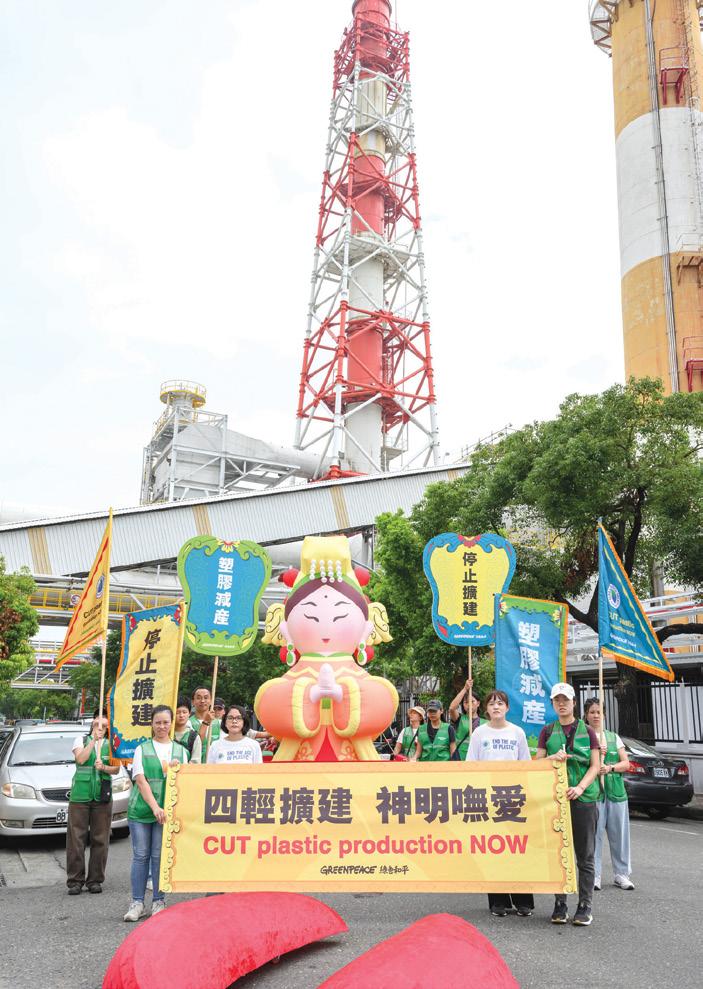
2.1 Why petrochemical plants?
There are health and ecological impacts at every point in the linear production chain of plastics, but a significant part of the problem with plastic is from its production in petrochemical plants, also described in this report as the “midstream” stage.
Figure 3 visualises the one way linear system of plastics production and the emissions at each stage. This starts with the extraction of fossil fuel (mostly crude oil and fossil gas) and its refining (which is also a significant contributor to air pollution40); the refined fossil fuel is then converted into petrochemicals and plastic resins (the final product is plastic nurdles) in the “midstream” stage, which is the focus of this report;
the nurdles are then used for the fabrication of plastic products for consumption in society, which are finally discarded as plastic waste at the end of their life. The recycling of small amounts of plastic, mostly PET from bottles, is stagnating at 9%, with the majority of PET not recycled into new bottles but used for other products such as fashion.41 It shows that pollution accompanies the plastics life cycle at every stage, from the extraction of fossil fuels, to the hazardous chemical pollution in both water and air emissions, to greenhouse gases and climate impacts, to plastic waste and the pollution of ecosystems with microplastics.
Figure 3: Steps in the linear life cycle of plastics, from oil extraction to plastic waste
Petrochemical plants have high energy demand and chemical throughput, as well as significant environmental and public health externalities. Atmospheric emissions and waste streams associated with this stage include:
• Greenhouse gases (GHGs), including carbon dioxide and methane, which contribute directly to climate change;
• Volatile organic compounds (VOCs), such as benzene, toluene and 1,3-butadiene, many of which are hazardous air pollutants (HAPs) and ozone precursors;
• Other air pollutants, including particulate matter (PM2.5 and PM10), nitrogen oxides (NOx), and sulfur oxides (SOx).42
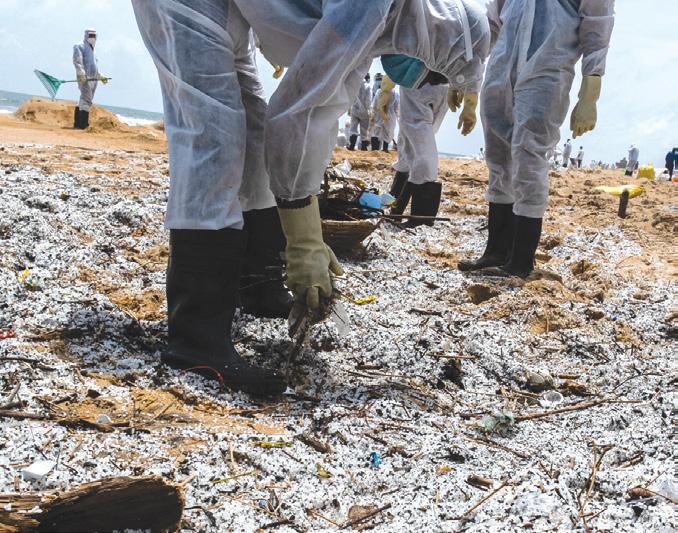
Petrochemicals production for plastics CASES OF CONCERN
Plastic nurdles containing toxic pollutants, Malaysia
Toxic chemical additives and pollutants that pose multiple health threats to humans and the environment have been found to be present in plastic pellets (nurdles) collected on a Malaysian beach. The plastic nurdles, made in petrochemical plants, are the building blocks for making plastics, and are shipped in large quantities around the world. In 2021, the X-Press Pearl container ship caught fire and sank off the coast of Sri Lanka, spilling billions of plastic pellets into the sea from the 87 containers on board,43 described by the UN as the largest plastic spill in history.44
The Consumers Association of Penang (CAP) participated in a study with the International Pollutants Elimination Network (IPEN) and International Pellet Watch (IPW), where 23 NGOs including CAP participated in the sampling of plastic pellets collected from a beach on Penang Island. Analysis showed that the pellets contained total polychlorinated biphenyl (PCB) concentrations of 7.8-34.7 ng/g. PCBs are listed as POPs (Persistent Organic Pollutants) under the Stockholm Convention, they have several negative effects on human health and the environment and are classified as carcinogens. Benzotriazole UV-stabilizers (BUVs), were also found at a total concentration of 246-1,275 ng/g, in the middle range compared to other pellet samples. Several BUVs can bioaccumulate and are persistent in the environment, and some are also known as endocrine-disrupting chemicals.45
When released into the ocean, plastic pellets are indistinguishable from fish eggs and are often mistakenly eaten by fish, seabirds and other marine wildlife. Plastic pellets can cause ulceration, as well as tricking fish into feeling full, believing they have eaten, which can lead to malnourishment and starvation. More than 220 marine species have been shown to eat microplastics like plastic pellets, as well as other plastic debris.46
Plastic pellets also act as “toxic sponges”, meaning they draw pollutants around them to their surfaces, which can then enter the food chain when these fish are eaten and bring about much wider impacts on ecosystems.47
Clean up efforts by the Sri Lankan Navy and Marine Environmental Protection Authority (MEPA) on Sarakkuwa beach, Negombo, after one of the worst environmental disasters in its history as a result of the sinking of the X-Press Pearl, which caught fire off the coast of Colombo. Tons of plastic pellets (aka nurdles) washed ashore and devastated kilometres of pristine beaches, threatening marine life. Pellets are microplastics the size of lentils, used as raw materials in the production of single-use plastic packaging.
© Greenpeace / Tashiya de Mel
2.2 What plastics are made in petrochemical plants?
In petrochemical plants, basic petrochemicals such as ethylene, propylene, and benzene are the building blocks for petroleum-based polymers or resins, which are converted into plastic nurdles — used as the feedstock for the many types of plastics (see Table 2). Other products made in petrochemical plants include soaps, detergents, fertilisers, solvents, drugs, pesticides, synthetic rubber, paints and insulating materials.
In addition to the bulk chemicals that make up the basic raw material for plastics, there are 16,325 known plastic chemicals, which can be persistent, bioaccumulative, mobile, and/or toxic. 3651 of these are known to be hazardous, while 10,345 have not even been assessed. For the vast majority, there is limited hazard data and regulation of chemicals of concern in plastics.48
Petrochemical plastics are used in a wide range of applications, with the greatest volumes used for plastic packaging, construction and textiles, as shown in Figure 4.49
Figure 4. Estimated consumption of plastic by end use sector
Table 1: Likely pollutants from petrochemicals processing
Petrochemicals processing step
Harmful pollutants that could be released during production
Steam cracking PM2.5, PM 10, NOx, SOX , and VOCs (such as benzene, ethylene, 1,3-butadiene, and toluene)
Polymerisation
VOCs—particularly benzene and 1,3-butadiene, depending on type of polymer
Table 2: The main types of plastics, their uses, and other chemicals of concern associated with specific polymers
Type of plastic and abbreviation
Main uses 50
Polypropylene (PP)
Packaging, plastic parts for automotives, machinery and equipment, plastic furniture, textiles
Polyethylene (PE) (HIgh Density - HDPE & Low Density -LDPE)
Polyethylene Terephthalate (PET)
Polyvinyl Chloride (PVC)
Packaging for food (milk jugs) and cosmetics, recycling bins, agricultural pipes (HDPE
Containers, six pack rings, plastic bags, wrap (LDPE)
Food and drink packaging (30%)
Textiles (polyester) (60%) 52
Construction (eg. windows & doors, water pipes, cables, flooring)
Some other chemicals of concern associated with specific plastics, which could be released during processing or remain within the polymer (in addition to those listed in Table 1)51
Additives- eg. UV & heat stabilisers, antioxidants
Additives - eg. UV & heat stabilisers, antioxidants
Antimony (used as a catalyst)
Additives - UV stabilisers
Ethylene Dichloride
Vinyl Chloride Monomer
Chlorine and chlorinated hydrocarbons
Additives - phthalates
Polystyrene (PS) Foam insulation, foam cups, packaging Styrene
Styrene oxide released during processing
Polycarbonate (PC) CDs, baby bottles and other food containers Depending on production method - methylene chloride and other solvents, chlorine, phosgene.
Bisphenol A
Polyurethane (PU) Insulation, soft foamed products (carpet underlay), artificial leather
Hazardous by-products including phosgene, isocyanates, toluene, diamines
Petrochemicals production for plastics CASES OF CONCERN
South Africa’s largest carbon emitter – Sasol
The main feedstocks for petrochemical production are oil and natural gas, however, in South Africa, a legacy policy decision from the apartheid era means that South Africa’s petrochemical sector relies heavily on coal as its primary feedstock, which takes place at Sasol’s Secunda coal-to-chemicals-and-liquids facility, South West of Johannesburg. 53
As well as being the largest South African producer of liquid fuels, Sasol Secunda’s liquid fuels and petrochemicals manufacturing activities currently fulfills approximately 50% of South Africa’s domestic demand for plastic raw materials such as polyethylene, polypropylene and polyvinyl chloride (PVC), with the remaining 50% being met through imports. 49% of these raw materials are used to make plastic packaging in South Africa. 54 Sasol is also heavily reliant on coal and a major greenhouse gas emitter, reported to be ahead of whole countries including Denmark, Finland and Ireland, and globally, its Secunda facility is the world’s single largest source of greenhouse gas emissions (GHG). 55
Residents of townships like Zamdela and eMbalenhle, near Sasol’s vast petrochemical refineries and coal-to-liquids plants, are suffering from severe and chronic health issues, including asthma, heart disease, and respiratory problems, which they attribute to the continuous toxic air pollution from Sasol’s operations. 56 Sasolburg, a government-identified air pollution hotspot, highlights South Africa’s challenge of balancing economic reliance on coal (which employs 90,000 and provides 80% of electricity and a third of liquid fuel) with public health. Despite government-mandated emission standards from 2010, Sasol has repeatedly and successfully lobbied for temporary exemptions from these regulations, citing cost and infeasibility of retrofitting filters, even as affected families are advised to move away for health recovery, a choice many cannot afford. 57
Sasol, faces widespread criticism for its significant contribution to climate change and localized air pollution, despite calls from activists, NGOs, and even shareholders for a clear transition plan, reparations to affected communities, and adherence to emission standards that the company has repeatedly sought to postpone. 58
Petrochemicals production for plastics CASES OF CONCERN
Panipat, Haryana, India
Recent years have seen the expansion of petrochemical facilities in West and South Asian countries, and in India, 67 per cent of the total petrochemical refining capacity is dedicated to the production of plastics. 59 The Indian Oil Corporation Ltd (IOCL) refinery in Panipat is spread over an area of 4,200 acres of land and is in close vicinity to seven villages. Down to Earth 60 highlights the severe health and environmental impacts of the petrochemical industry in Panipat, Haryana, India, with workers suffering from acute respiratory infections, loss of hearing and sight, clinical depression, and skin diseases, attributed to their work environment. Beyond the plant, residents in the seven nearby villages are also at increased risk, with studies linking living near petrochemical industries to higher incidences of cancer.
In 2018, the then sarpanch (head) of Singhpura Sithana village filed a case against the refinery, leading to an investigation and report to the National Green Tribunal which found that the plant affected the human health of more than 7,500 people between 2015 and 2019. The CGT calculated that environmental compensation of Rs 659.49 crore was needed, however, by April 2024 IOCL had only paid approximately Rs 44 crore in four installments.61
The national scale of one health impact was revealed by researchers at the Delhi-based Centre for Science and Environment, who analysed National Health Survey data to compare the cases of acute respiratory infection in children below five years of age in those districts that have a refinery, to the remaining districts of the state that do not have one. This revealed that 8 of 13 districts recorded a higher occurrence of acute respiratory infections in districts with petrochemical refineries: in 4 states (including Haryana), the increase was in the range of 250 per cent to over 600 per cent.62
2.3 Why air pollution and proximity to petrochemicals?
Living in proximity to a petrochemical production site has been associated with negative health effects. Possible causes of these effects include exposure to air pollutants emitted during plastic production processes. Therefore, living near a petrochemical facility is a risk factor for exposure and a cause for concern, with higher rates of illness observed closer to these facilities. The US EPA describes zones with a higher risk of exposure for areas that are within 5 miles (8km) of a petrochemical facility,63 and there is also evidence of increased concentrations of hazardous pollutants and elevated health risk recorded within 10 km of petrochemical operations, compared to background areas.64
Many petrochemical plants, on their own or grouped together in clusters, are located close to waterways and near to population centres. For this study, Greenpeace East Asia identified the locations of all known petrochemical facilities in 11 countries across East Asia, South East Asia, Europe and North America. The countries were selected because of their significant petrochemical presence or association with major plastic-related concerns, relevant to Greenpeace’s active campaigns on the issue of plastic pollution.
We cross-referenced these locations with data on population density in what our report terms an “elevated risk-of-exposure” zone of 5km, and an “extended risk-of-exposure” zone of 10km. Geospatial analysis was used to estimate on a country-level the number of people who live within 5 or 10 km of a petrochemical production facility involved in the virgin plastics value chain across 11 countries.65 The global results are shown in Figure 5.
Figure 5: The number of residents living within 5 km and 10 km of petrochemical production facilities, total for all 11 countries analysed
Number of people within 5 km
Number of people within 10 km
2.4 RESULTS FOR THE 11 COUNTRIES IN OUR AIR POLLUTION STUDY
KEY FINDINGS:
01 05 02 06 03 07 04
Country with the highest proportion of people at risk of exposure: The highest proportion of the population estimated to be living within 10km of plastics-linked petrochemical production sites is in The Netherlands, with approximately 4.5 million people out of a total population of nearly 18 million, or 1 in 4 people (25.6%).
Living near petrochemical sites is a risk factor for health: The study reviewed scientific literature and found a substantial body of evidence that links living within 10 km of a petrochemical production facility to population health risks from air pollution.
Millions are at risk of exposure: Across the study area’s 11 countries, the analysis found that over 16 million people reside within 5 km of a petrochemical production facility linked to the plastics value chain. This figure increases to over 51 million people when considering a distance of 10 km.
People live side by side with petrochemicals: in all of the 11 focus countries, residential areas exist within 10km of the production of petrochemicals for the plastics value chain.
Switzerland is the country with the second highest proportion of the population estimated to be living within 10km of plastics-linked petrochemical production sites, at 10.9% of the population.
Country with the highest number of people at risk of exposure: The US has the largest number of people estimated to be living within 10km of a petrochemical production facility, with over 13 million people, an exposure risk which is concentrated in Texas and Louisiana.
Air pollution knows no borders: Border zone areas in Canada, Germany, Malaysia, the Netherlands, Switzerland, and the United States contain petrochemical production facilities located within 10 kilometers of neighboring countries
2.5 MAPS SHOWING RESULTS OF GEOSPATIAL ANALYSIS, PER COUNTRY
PETROCHEMICAL PRODUCTION AREAS FOR THE MIDSTREAM STAGE OF THE PLASTICS VALUE CHAIN
Figure 6. Population distribution (orange) and petrochemical production areas for the midstream stage of the plastics value chain (red) in Canada. Spatial population distribution data are from Bondarenko et al. (2025), and information about the distribution of petrochemical production was complied by Greenpeace East Asia.
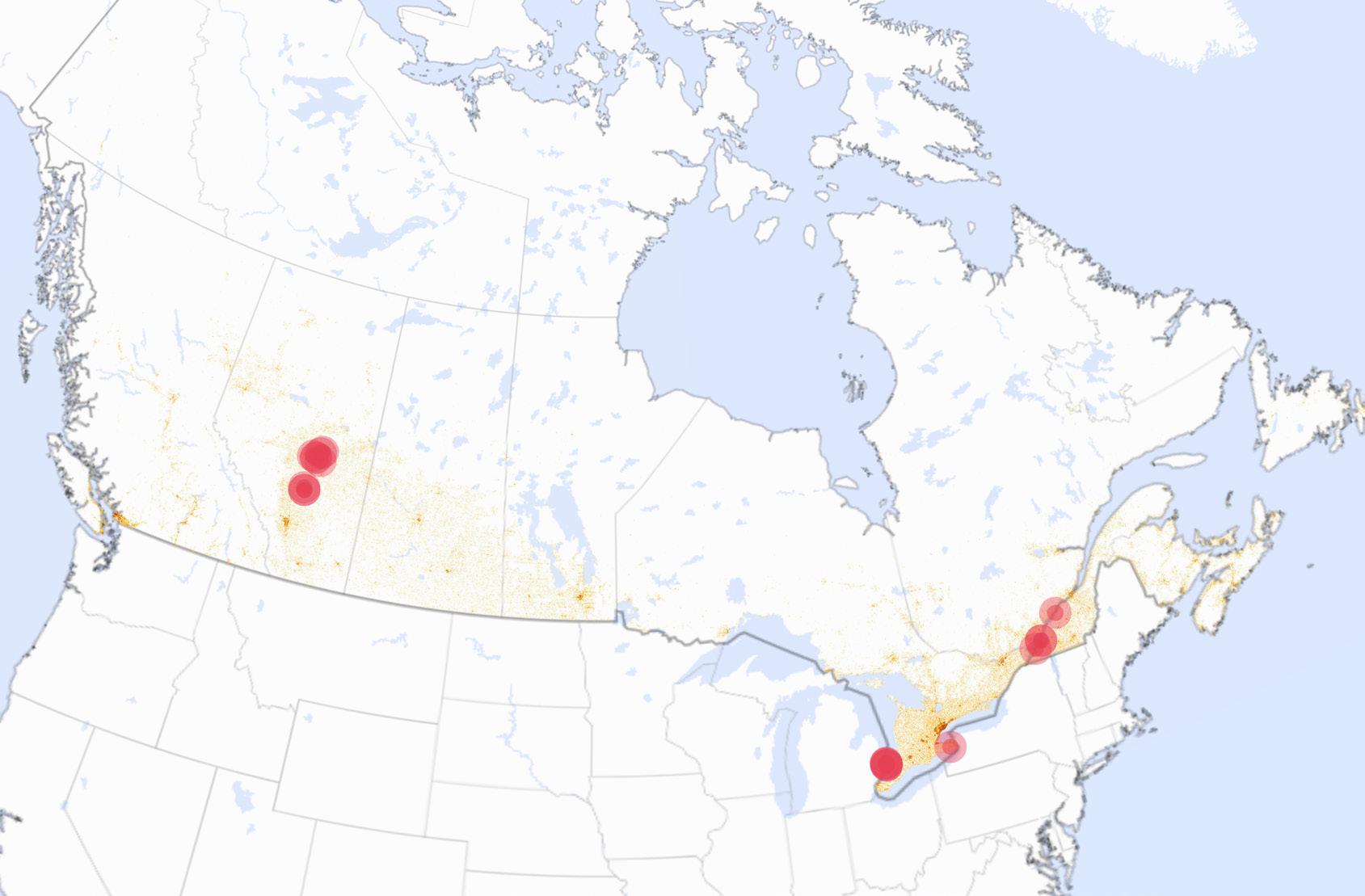

Esri, TomTom, Garmin, FAO, NOAA, USGS, EPA, NRCan, Parks Canasa, Esri, USGS
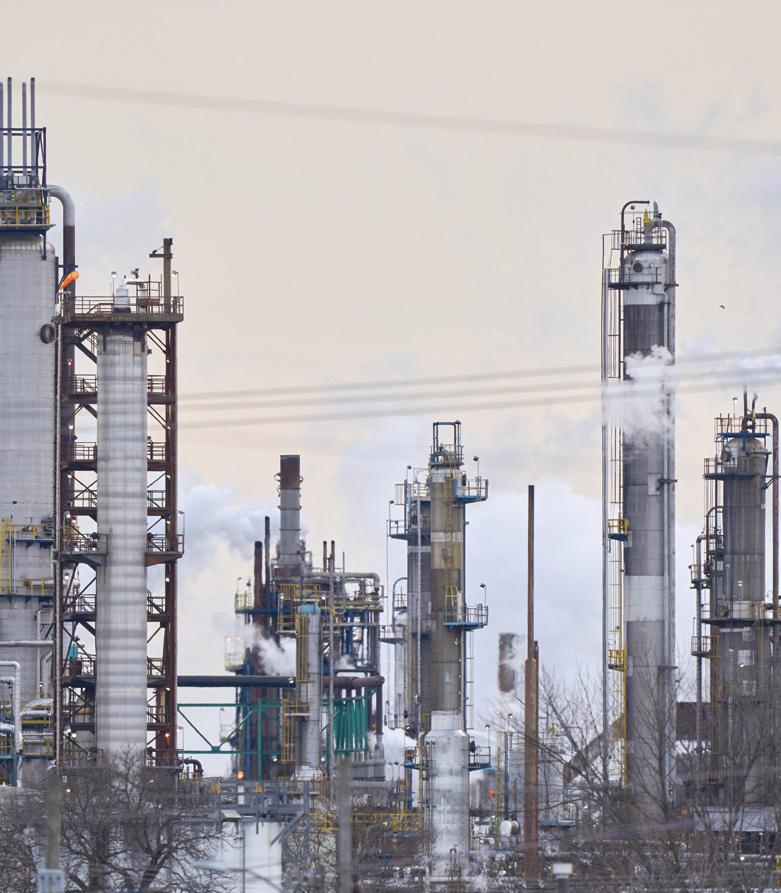
Petrochemicals production for plastics CASES OF CONCERN
“Chemical Valley”, Sarnia, Ontario, Canada
One of the most notorious pollution hotspots in Canada – “Chemical Valley”, in Sarnia, Ontario – has been identified as a “sacrifice zone” by the United Nations. Chemical Valley is located on the traditional land of the Aamjiwnaang Anishinaabe, beside the community of Aamjiwnaang First Nation, that lives in close proximity to more than 40 large petrochemical, polymer, oil-refining and chemical facilities.66
Aamjiwnaang has endured more than a century of environmental racism associated with industrial pollution of the air, land and waters of the Great Lakes. According to a report by the Ontario Ministry of the Environment, Conservation and Parks,67 elevated health risks have been identified for benzene, fine particulate matter and sulphur dioxide, pollutants that cause serious health risks, including elevated cancer and asthma rates, and disrupt the community’s inherent and constitutionally protected Aboriginal and Treaty rights and traditional way of life. Benzene levels, particularly near the Aamjiwnaang reserve, are above safe limits, while sulphur dioxide spikes exacerbate respiratory issues. Other mental and physical health issues are common, such as high rates of miscarriages, anxiety and childhood respiratory illness.68 This Indigenous community endures some of the worst air quality in Canada.
Aamjiwnaang has called on the Ontario and Canadian governments to work closely with the community to address the injustices and health crisis faced in the community through a series of actions including technical reviews and pollution controls, cumulative impact assessments, regulatory and policy updates and rapid implementation, health study monitoring and follow up, and improved oversight of industry.69
Steam and smoke rise from stacks in “Chemical Valley” in Sarnia, Ontario, on April 1, 2025.
Photo by GEOFF ROBINS/AFP via Getty Images
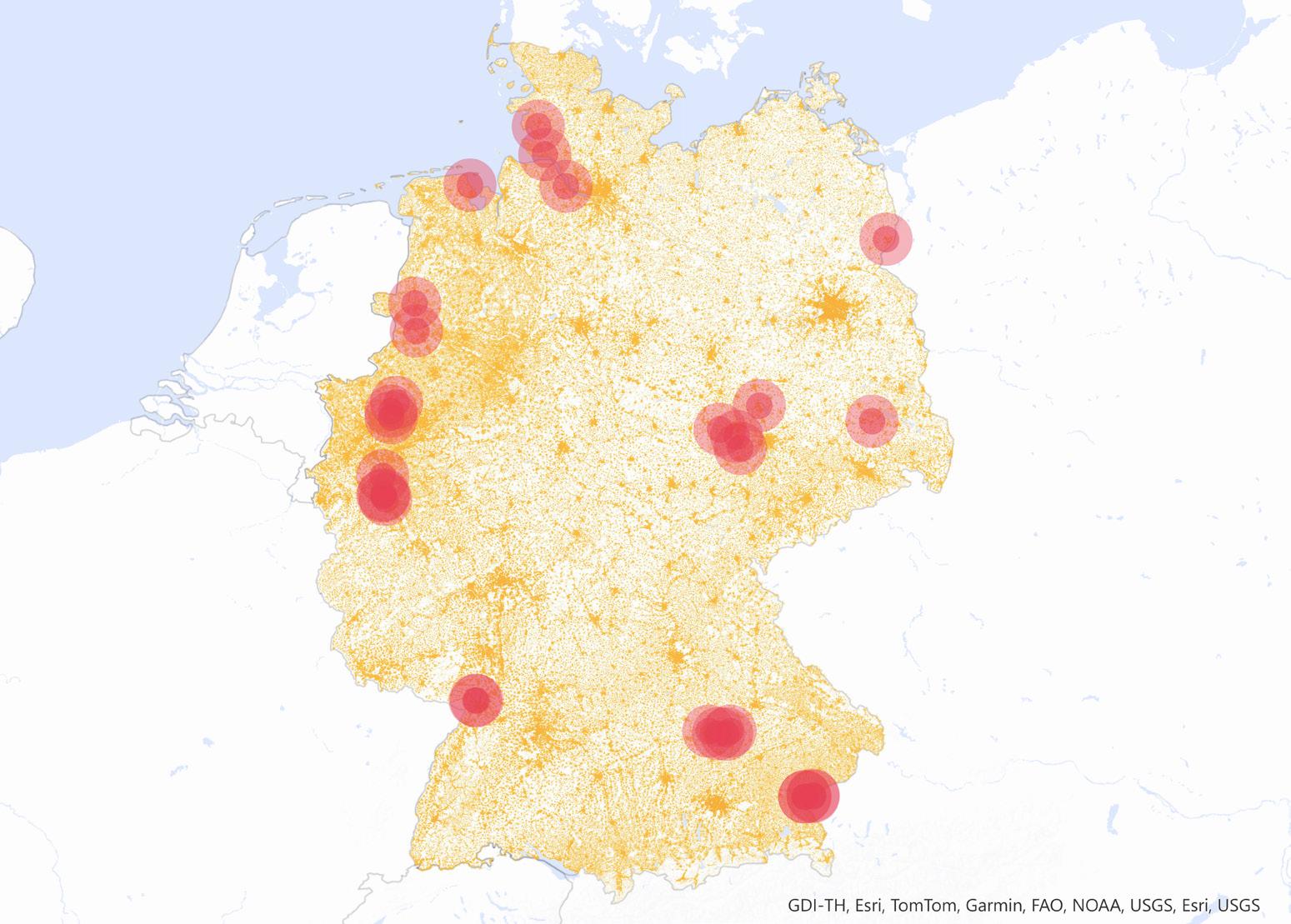
Figure 7. Population distribution (orange) and petrochemical production areas for the midstream stage of the plastics value chain (red) in Germany. Spatial population distribution data are from Bondarenko et al. (2025), and information about the distribution of petrochemical production was complied by Greenpeace East Asia.

GDI-TH, Esri, TomTom, Garmin, FAO, NOAA, USGS, Esri, USGS
LEGEND
Figure 8. Population distribution (orange) and petrochemical production areas for the midstream stage of the plastics value chain (red) in Indonesia. Spatial population distribution data are from Bondarenko et al. (2025), and information about the distribution of petrochemical production was complied by Greenpeace East Asia.
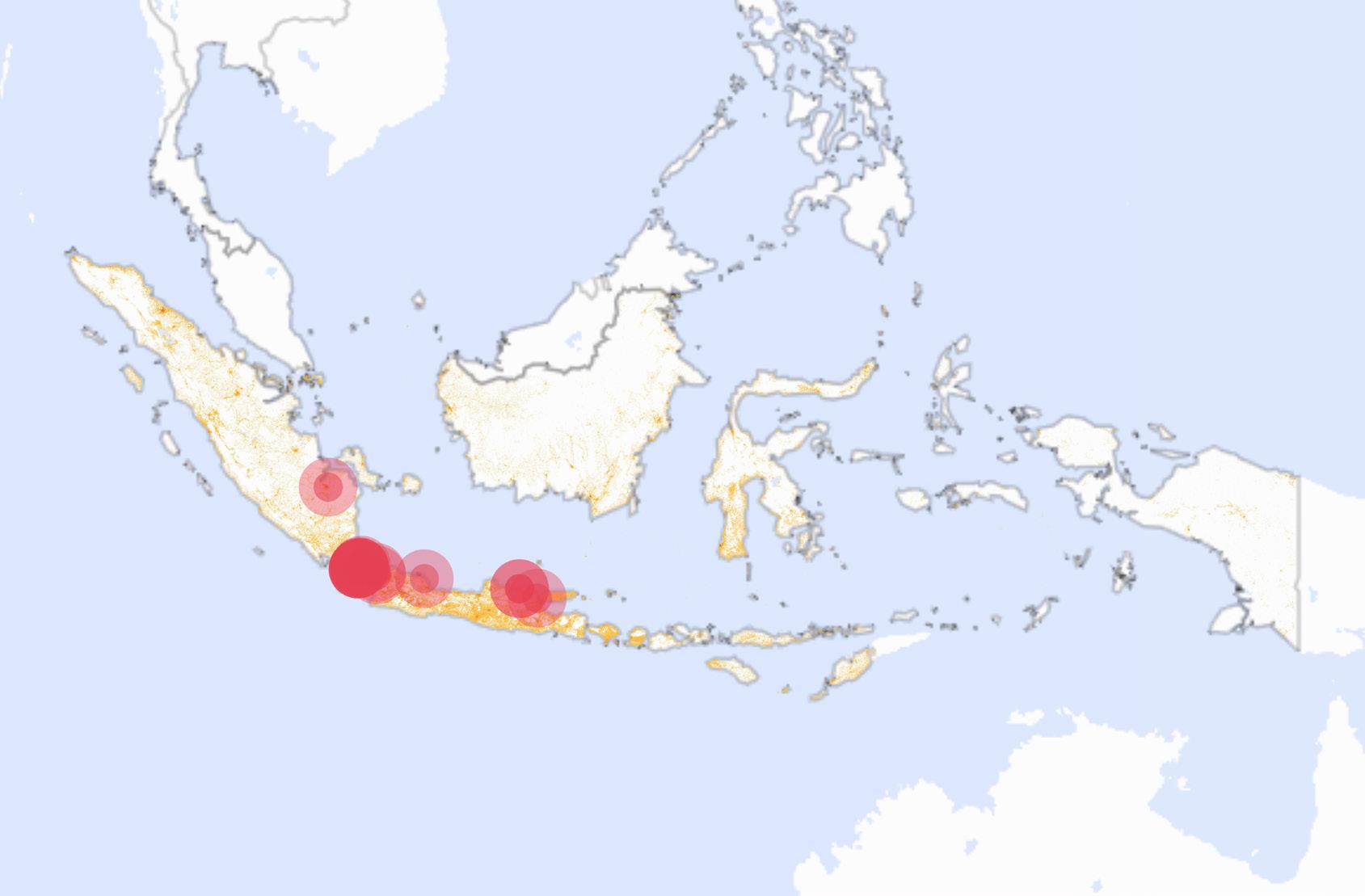

Esri, TomTom, Garmin, FAO, NOAA, USGS, Esri, USGS
Republic of Korea
Figure 9. Population distribution (orange) and petrochemical production areas for the midstream stage of the plastics value chain (red) in Republic of Korea. Spatial population distribution data are from Bondarenko et al. (2025), and information about the distribution of petrochemical production was complied by Greenpeace East Asia.

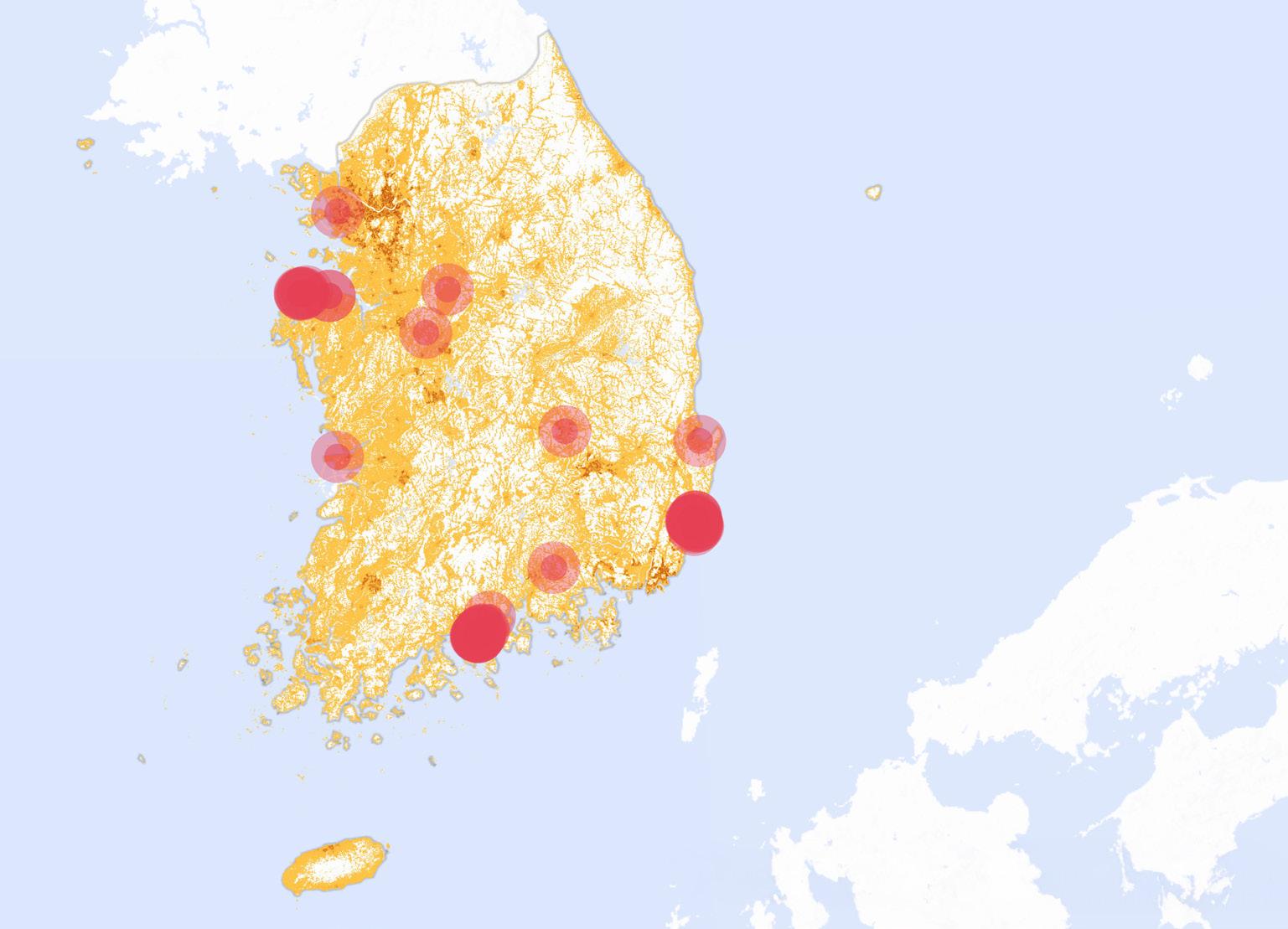

Esri, USGS, Esri South Korea, Esri, © OpenStreetMap contributors, TomTom, Garmin, FAO, NOAA, USGS
Petrochemicals production for plastics CASES OF CONCERN
Collusion on pollution: Yeosu industrial complex, South Korea
In a significant environmental scandal, South Korea’s environment ministry revealed that 235 chemical factories, including industry leaders LG Chem Ltd and Hanwha Chemical Co in the Yeosu industrial complex, colluded with four measurement agencies over four years to manipulate data on the emission of air pollutants including fine particles. At the request of the factories, the measurement agencies lowered emission levels of major air pollutants, such as dust, sulfur oxide and nitrogen oxide, to 33.6 percent of what was actually measured. LG Chem’s factory colluded with its measurement agency to manipulate the amount of emissions of major air pollutants including vinyl chloride, which was 173 times higher than the standard. LG Chem was booked for 149 cases of manipulation of measured values.70
Vinyl chloride is a toxic chemical used to make polyvinyl chloride (PVC) plastic, with no safe level of exposure; it is considered a Group 1 carcinogen by the International Agency for Research on Cancer (IARC).71 This revelation comes amidst increasing public concern over air pollution health risks, prompting apologies from LG Chem and Hanwha Chemical, with LG Chem committing to shut down the implicated production facilities. The Yeongsan River environment agency recommended the indictment of the involved measurement firms and six chemical emitters to the prosecution.72 Previously, in 2013 LG Chem was also among 164 companies found to have violated limits for the discharge of toxic chemicals into wastewater.73
In May of 2020, a chemical disaster dubbed “Mini-Bhopal” by UNEP’s human rights expert occurred at a LG Polymers plant in India, a subsidiary of South Korea based LG Chem. Toxic styrene gas leaked out from the plant, killing 15 people and injuring hundreds. LG Polymers produces polystyrene and its copolymers in the facility located in Visakhapatnam 74
Activists from Greenpeace East Asia hold banners in front of a petrochemical complex (not in the Yeosu industrial complex mentioned in this case study) near Dangjin, South Korea, 300km from where world leaders are gathered at the Global Plastics Treaty negotiations in Busan. © Greenpeace / Yejin Kim
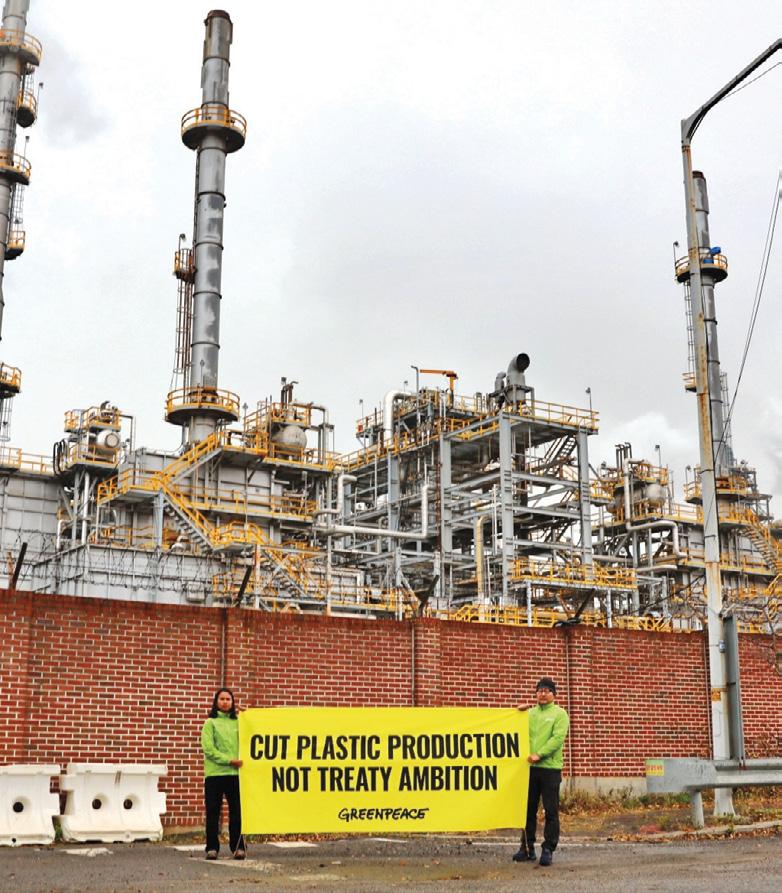
Figure 10. Population distribution (orange) and petrochemical production areas for the midstream stage of the plastics value chain (red) in Malaysia. Spatial population distribution data are from Bondarenko et al. (2025), and information about the distribution of petrochemical production was complied by Greenpeace East Asia.
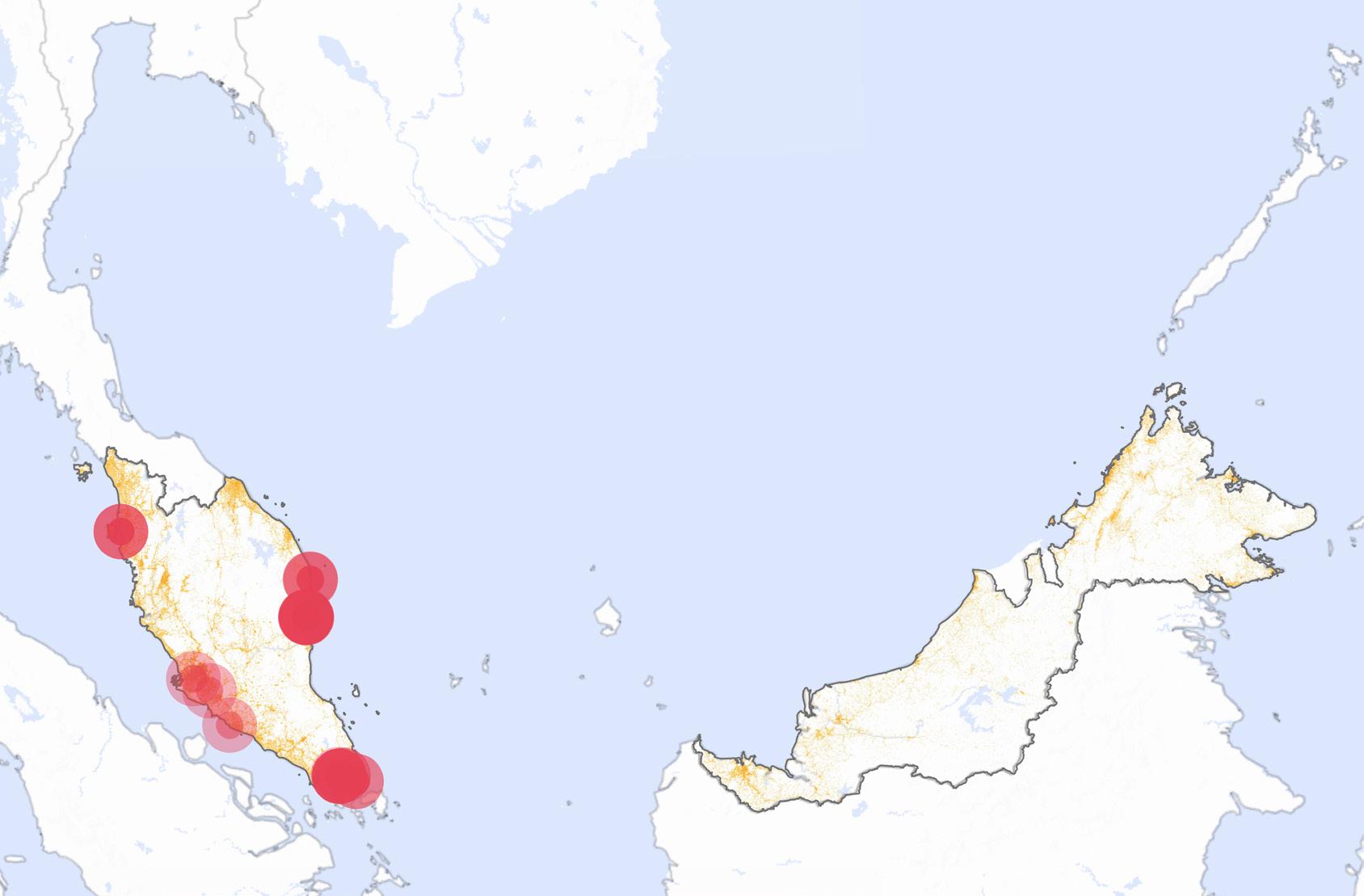

Esri, TomTom, Garmin, FAO, NOAA, USGS, Esri, USGS
Land
The Netherlands
Figure 11. Population distribution (orange) and petrochemical production areas for the midstream stage of the plastics value chain (red) in The Netherlands. Spatial population distribution data are from Bondarenko et al. (2025), and information about the distribution of petrochemical production was complied by Greenpeace East Asia.
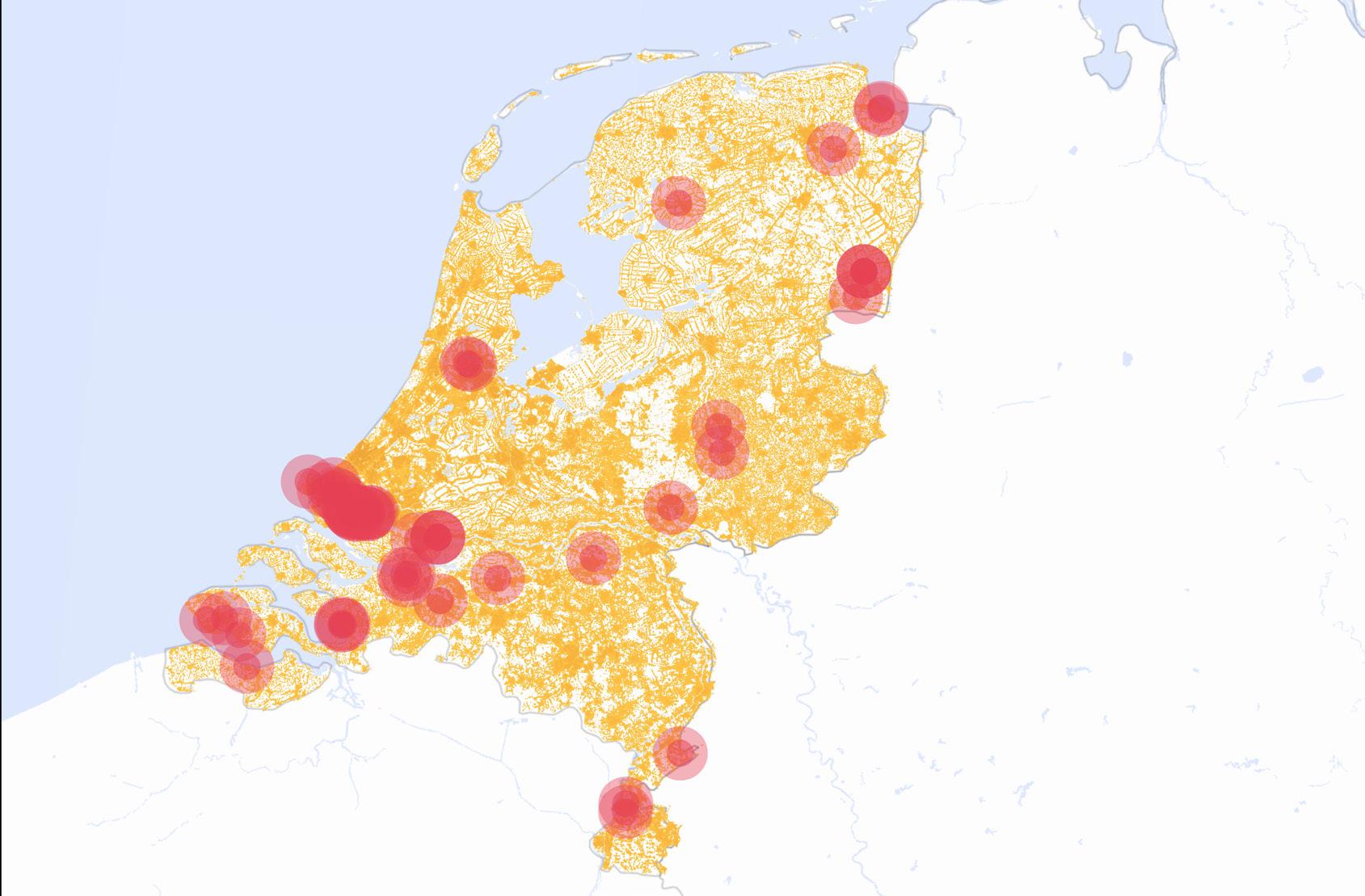

LEGEND
NRW, Esri, TomTom, Garmin, FAO, NOAA, USGS, Esri, USGS
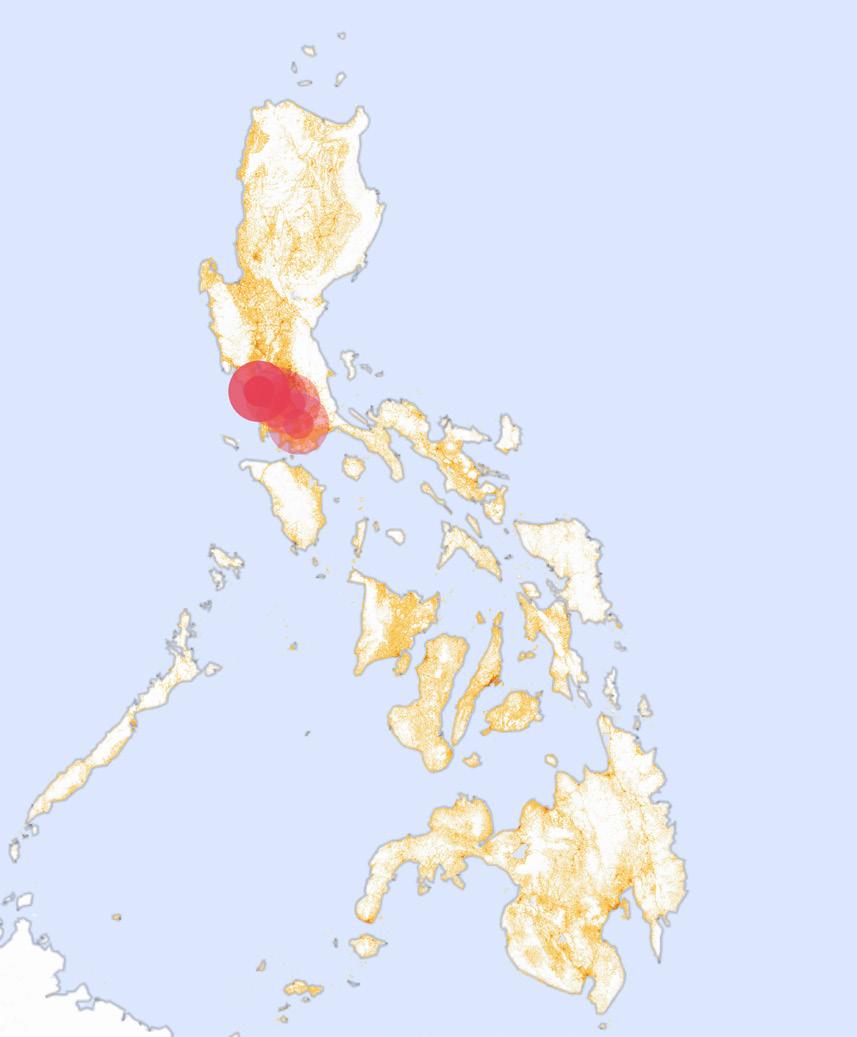
The Philippines
Figure 12. Population distribution (orange) and petrochemical production areas for the midstream stage of the plastics value chain (red) in The Philippines. Spatial population distribution data are from Bondarenko et al. (2025), and information about the distribution of petrochemical production was complied by Greenpeace East Asia.

Esri, TomTom, Garmin, FAO, NOAA, USGS, Esri, USGS
Figure 13. Population distribution (orange) and petrochemical production areas for the midstream stage of the plastics value chain (red) in Switzerland. Spatial population distribution data are from Bondarenko et al. (2025), and information about the distribution of petrochemical production was complied by Greenpeace East Asia.
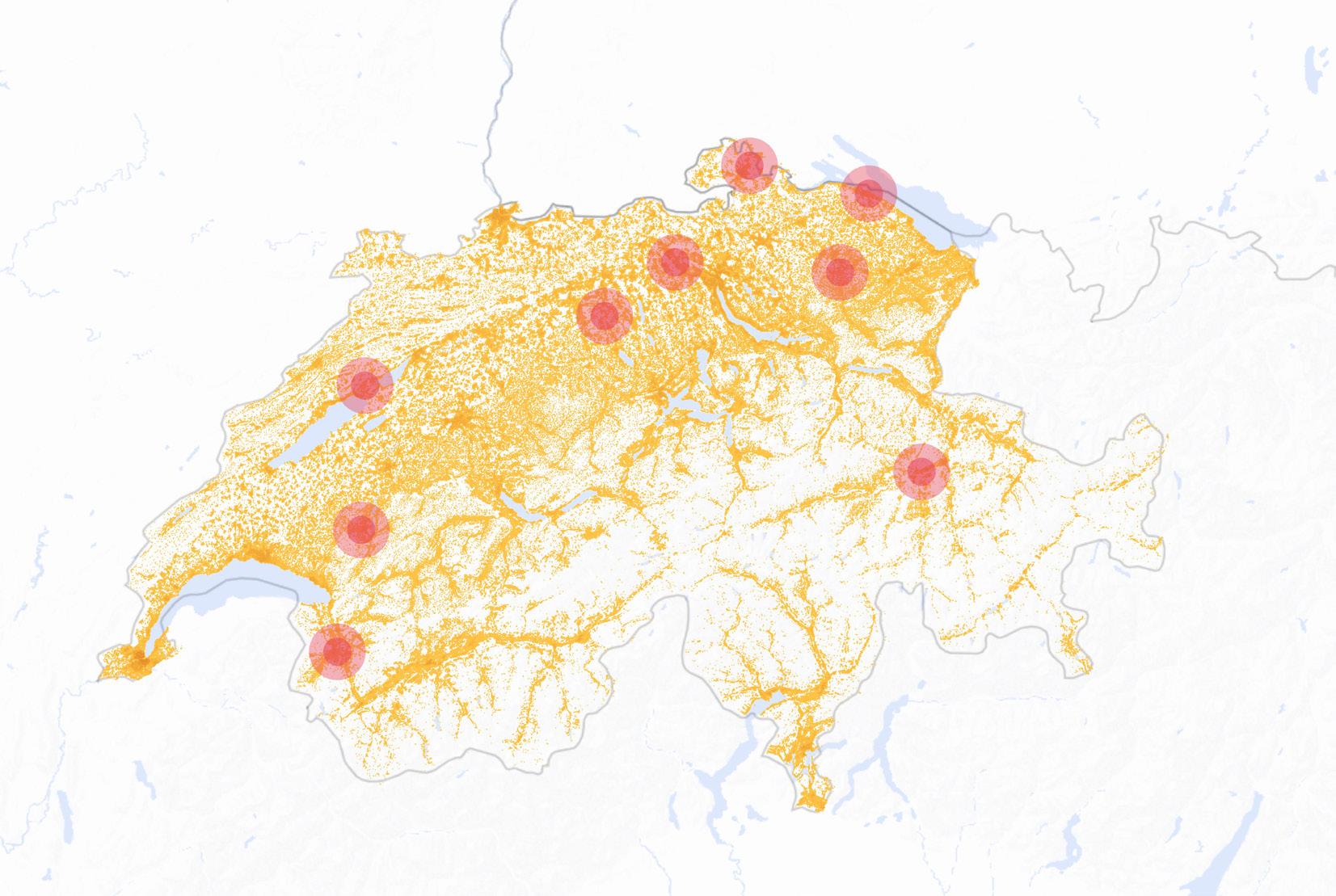

LEGEND
Esri, CGIAR, USGS, FOEM / Swiss Parks Network, swisstopo, Esri, TomTom, Garmin, FAO, NOAA, USGS
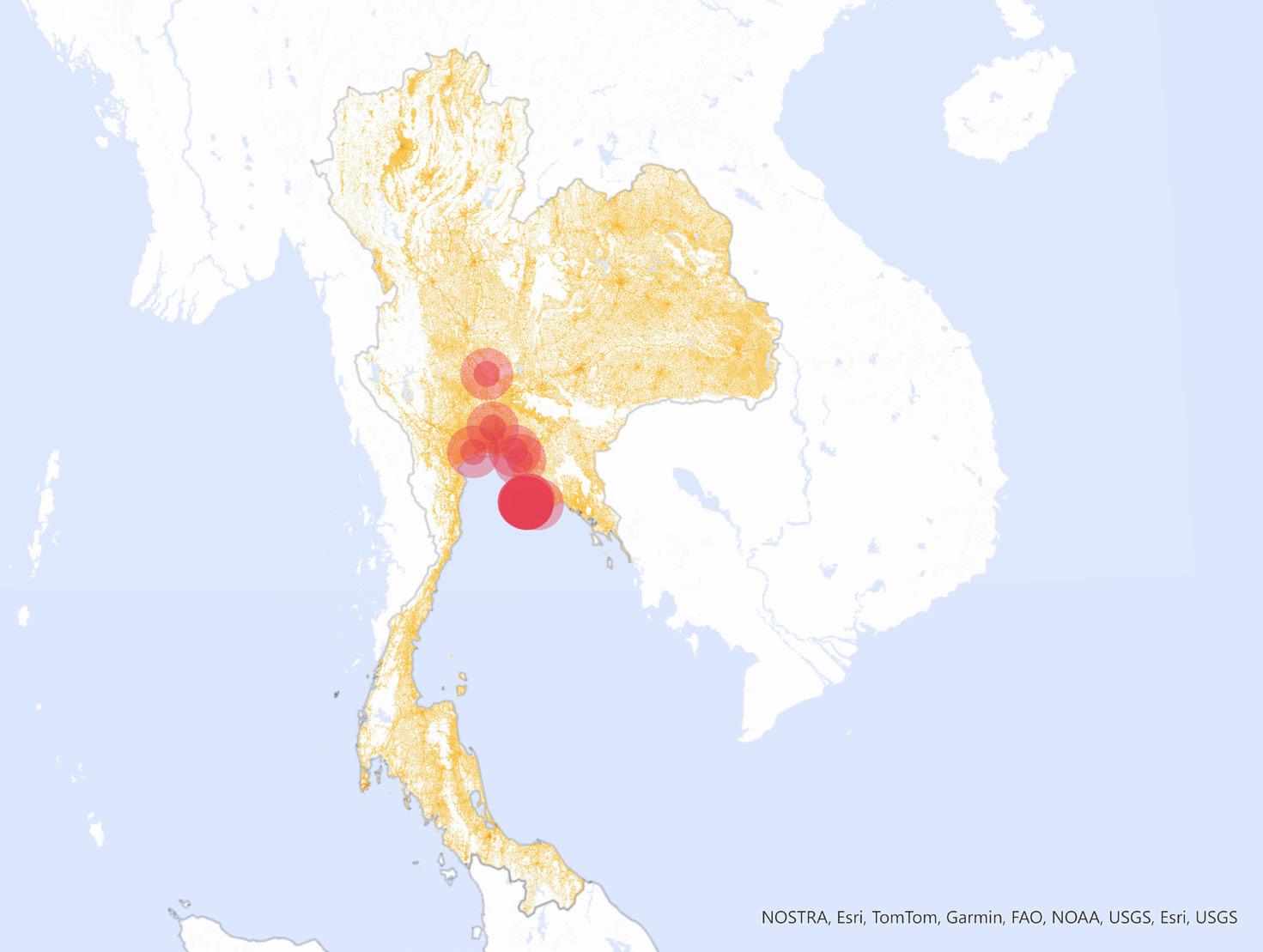
Figure 14. Population distribution (orange) and petrochemical production areas for the midstream stage of the plastics value chain (red) in Thailand. Spatial population distribution data are from Bondarenko et al. (2025), and information about the distribution of petrochemical production was complied by Greenpeace East Asia.

NOSTRA, Esri, TomTom, Garmin, FAO, NOAA, USGS, Esri, USGS
The United Kingdom
Figure 15. Population distribution (orange) and petrochemical production areas for the midstream stage of the plastics value chain (red) in The United Kingdom. Spatial population distribution data are from Bondarenko et al. (2025), and information about the distribution of petrochemical production was complied by Greenpeace East Asia.
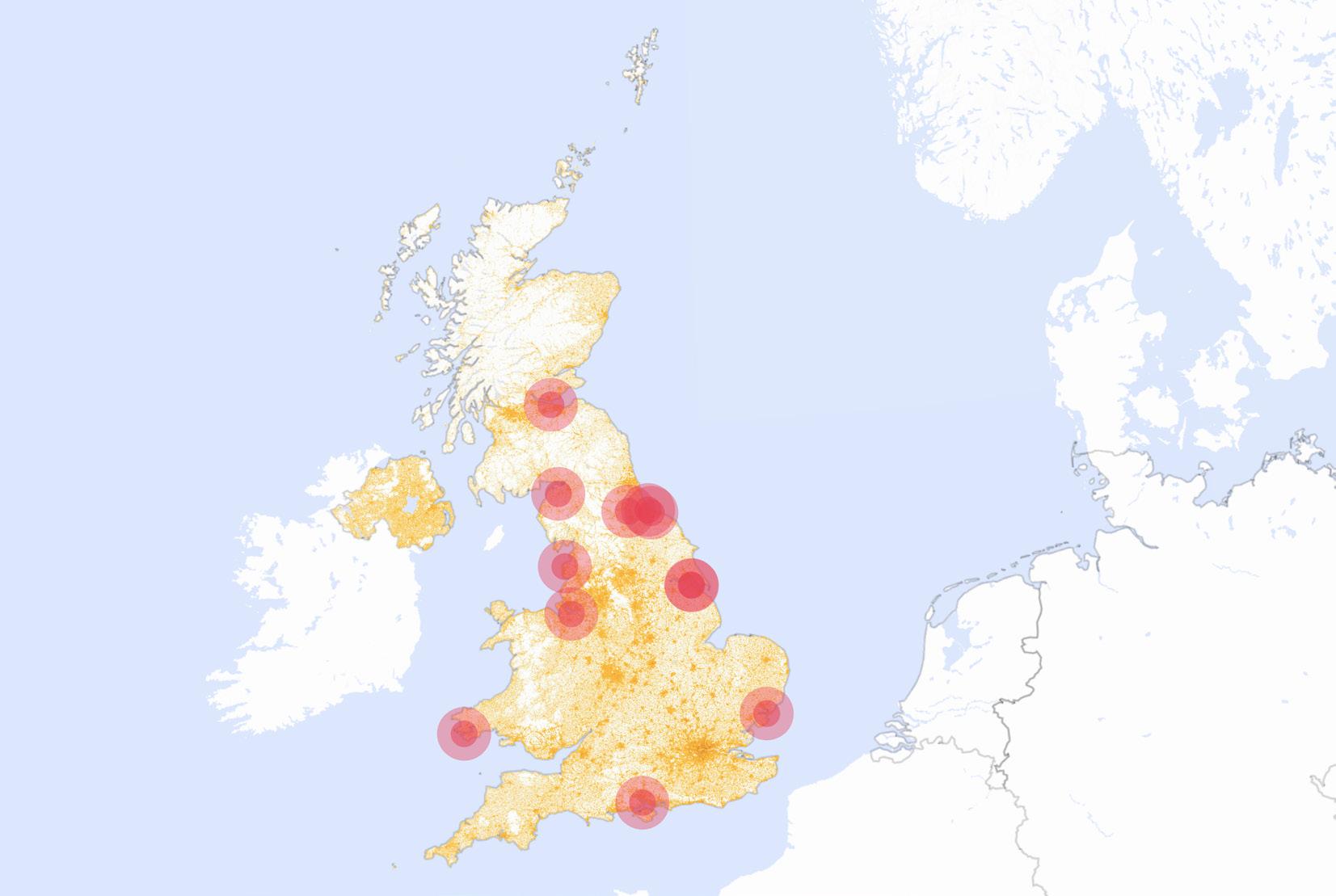

LEGEND
Esri UK, Usri, TomTom, Garmin, FAO, NOAA, ESGS, Esri, USGS
The contiguous United States
Figure 16. Population distribution (orange) and petrochemical production areas for the midstream stage of the plastics value chain (red) in the contiguous United States. Spatial population distribution data are from Bondarenko et al. (2025), and information about the distribution of petrochemical production was complied by Greenpeace East Asia.
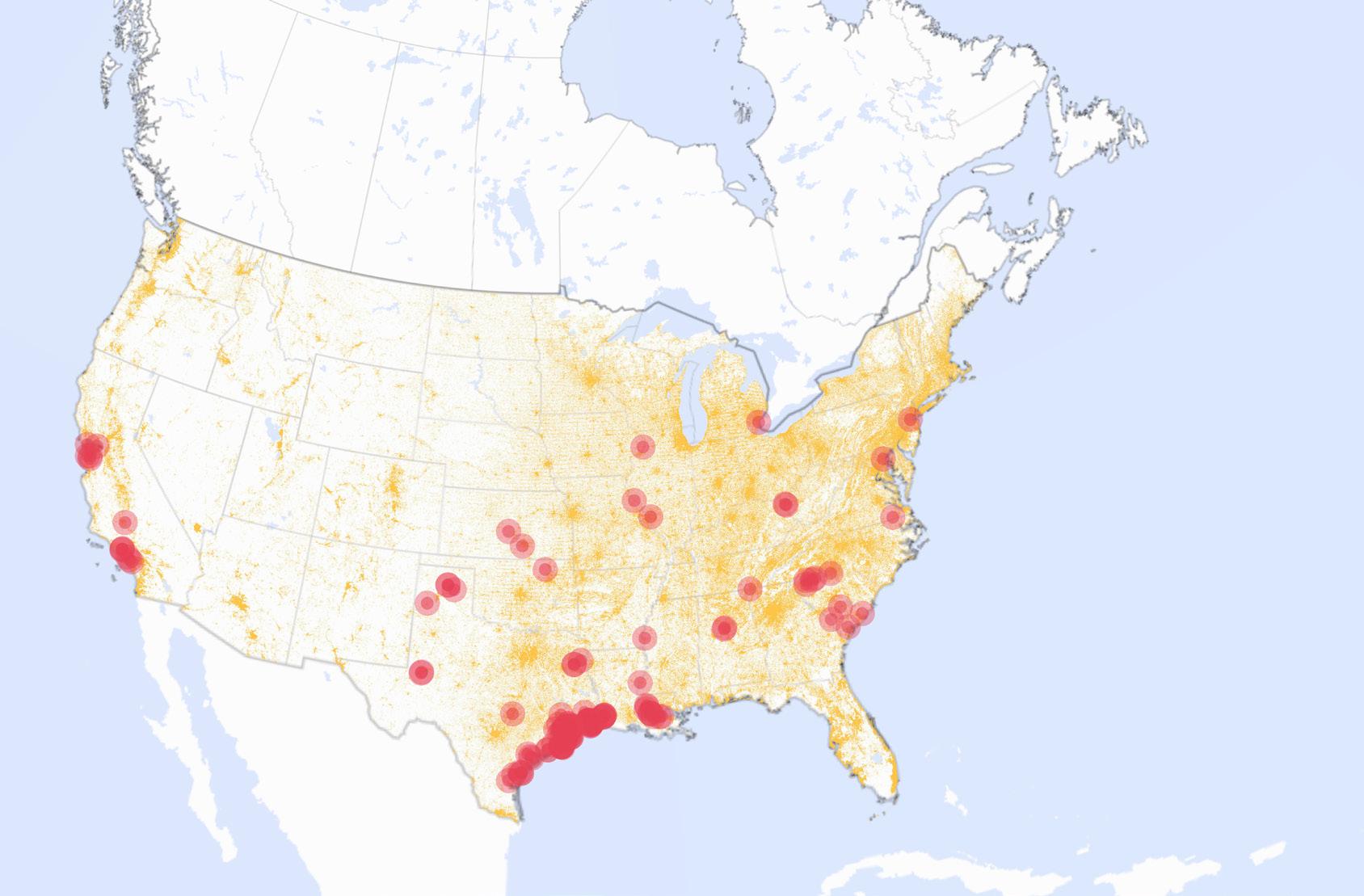

Esri, TomTom, FAO, NOAA, USGS, Esri, USGS

Dozens of environmental justice leaders and activists from around the country gathered outside the headquarters of Formosa Plastics Corporation, USA in Livingston, New Jersey, to raise awareness about the atrocities committed by Formosa Plastics Group around the world and to demand justice for the victims in Vietnam, Texas, and Louisiana. Additionally, in St. James Parish, Louisiana, activists are working diligently to dismantle plans to build a giant 14- plant Formosa Plastics facility in the heart of a region already known as “Cancer Alley.” © Greenpeace / Stephanie Keith
Petrochemicals production for plastics CASES OF CONCERN
Cancer Alley, Louisiana, United States
This is a well-documented example75 of how extreme pollution from the fossil fuel and petrochemical industries leads to a disproportionate burden of health and environmental impacts on a local population of mainly Black and low-income people. The communities in Cancer Alley stretch for about 85 miles along the banks of the Mississippi River between New Orleans and Baton Rouge, alongside a dense concentration of some 200 petrochemical facilities, including the world’s largest producer of styrofoam. People in this area suffer from elevated rates of cancer (far higher than the national average,76 including breast, prostate, and liver cancers), damage to reproductive and maternal health (such as low birth weight in up to 27% of births, preterm births in up to 25.3% of cases, miscarriages, stillbirths, and infertility), and respiratory ailments (including chronic asthma, bronchitis, and persistent sinus infections).77
In 2022, the UN Special Rapporteur on Human Rights and the Environment identified Cancer Alley as one of several global areas where people’s exposure to pollution and toxic substances is so extreme in the areas in which they live that they are described as “sacrifice zones”.78
Petrochemicals production for plastics CASES OF CONCERN
Houston Ship Channel, Texas, USA
The Houston Ship Channel in Texas, USA is a 52-mile waterway surrounded by over 600 industrial plants forming one of the world’s largest petrochemical complexes, which operates continuously and emits toxic pollution impacting human health, the environment, and the climate.79 Described as a “sacrifice zone” by Amnesty International in a 2023 report, 80 this pollution disproportionately affects low-income, racialized communities and those with limited English proficiency, exposing them daily to hazardous chemicals, loud industrial noise, and frequent chemical disasters—at least seven in 2023 alone—which the state of Texas largely fails to regulate effectively. Amnesty’s research from 2023, based on interviews with 29 residents and workers, and 14 experts, highlights that irresponsible operating practices by companies like ExxonMobil, LyondellBasell, Shell Chemicals, and ITC violate human rights, including the rights to a clean environment, health, equality, and even life.
2.6 Health impacts of living near a petrochemical plant
The populations identified in the study live at a proximity to petrochemical production facilities that has been associated with higher rates of negative health impacts in surrounding populations, possibly from the effects of being exposed to air pollutants emitted during petrochemical production processes. The contribution of individual facilities to exposure risk levels in local populations was not assessed. Huge volumes of feedstocks for plastics are made in petrochemical plants: combined global ethylene and propylene production, used in the production of polymers to make plastics, is approximately 255 Mt/yr. 81 When such huge volumes and numerous processes are involved, inevitably emissions will occur, both on a routine basis and as fugitive emissions due to equipment leaks or process upsets, 82 no matter how stringent the regulation and enforcement, or the effectiveness of mitigation efforts. These emissions pose significant health threats to surrounding residential populations.
Among the pollutants, benzene and 1,3-butadiene are especially concerning due to their carcinogenic and neurotoxic properties. Chronic exposure to 1,3-butadiene increases the risk of leukaemia, benzene is linked to both leukaemia and reproductive harm in women, and long-term exposure to toluene can lead to adverse effects on the nervous and reproductive systems. 83
A substantial body of literature establishes that geographic proximity plays a critical role in shaping health outcomes, including through pathways of air and water. For example, communities located nearer to petrochemical facilities face higher rates of illness, ranging from haematologic cancers,84 lung cancer,85 respiratory conditions,86 kidney dysfunction,87 and even adverse perinatal outcomes of low birth weight and preterm birth,88 reflecting a clear spatial gradient of risk.
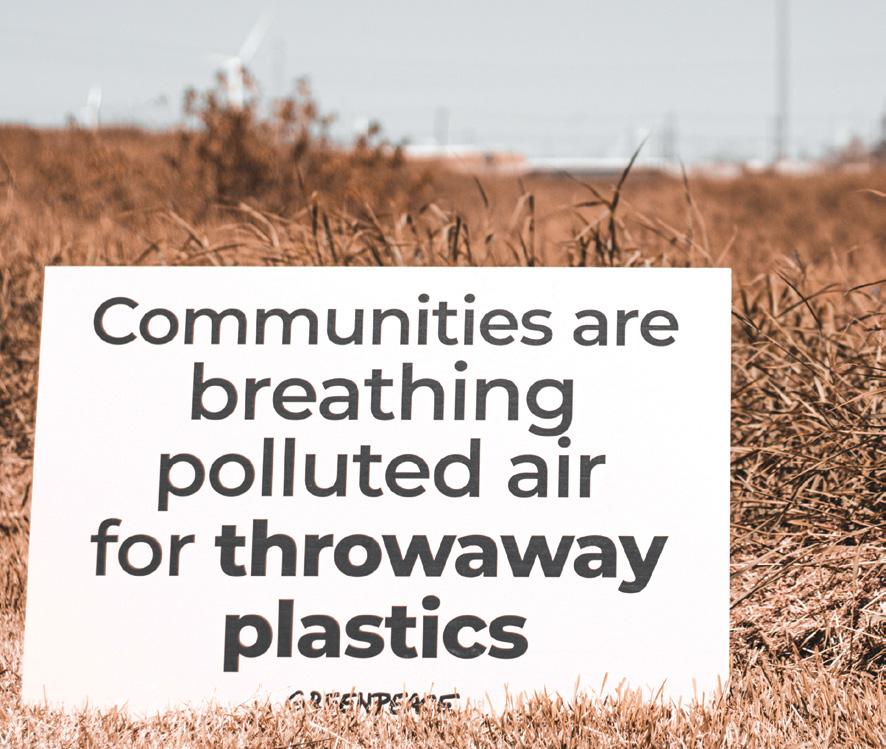
A sign reads “Communities are breathing polluted air for throwaway plastics” outside the SABIC Plastics Production Complex in Texas (a subsidiary of the Saudi state petroleum and gas company Saudi Aramco). SABIC is in a joint venture with ExxonMobil, to build a new ethylene and polyethylene complex, intended to take advantage of growing output from fracking in the nearby Permian Basin. Its output will reportedly include packaging materials. © Greenpeace / Alley Pentecosti
CONCLUSION
Greenpeace Taiwan collaborated with the research team at National Taiwan Ocean University to collect nurdles from beaches. Subsequent laboratory analyses were conducted to identify the plastic composition and detect adsorbed organic pollutants, aiming to further investigate the potential sources of the nurdles and their environmental impact.
© Greenpeace / Chase Huang
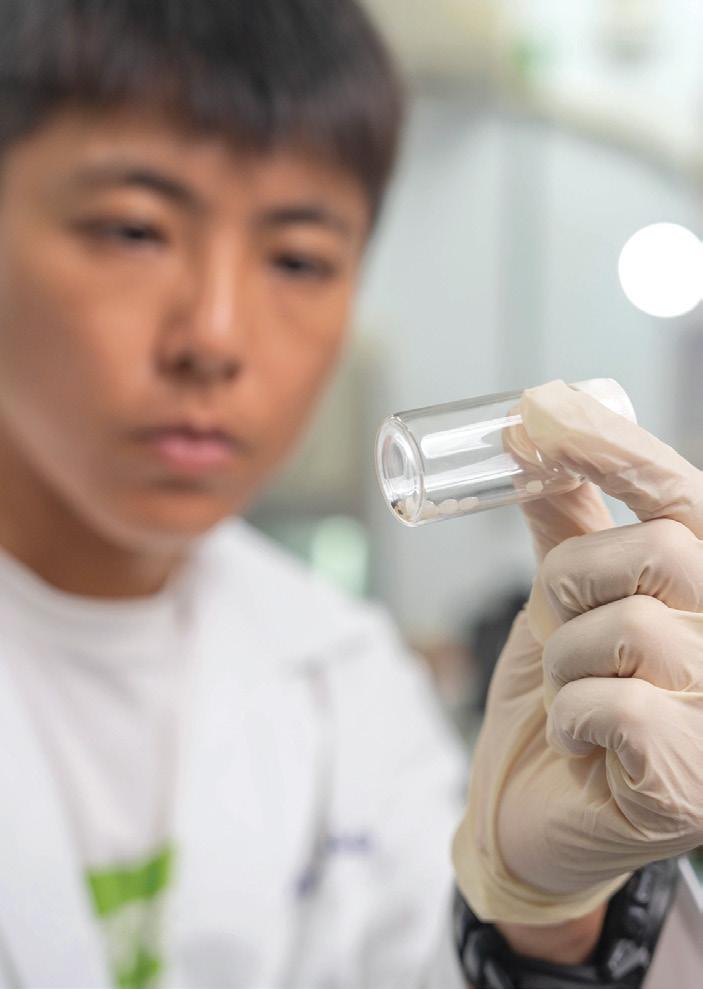
Evidence shows that pollution from petrochemical plants for plastics is a source of hazardous air pollutants. Our analysis identified an exposure risk for over 51 million people based on their proximity to petrochemicals production, but the true number is likely to be higher because we only considered one exposure pathway (place of residence); other pathways such as occupation are also important but were not assessed. Also, as the study only covered 11 countries, this does not represent the entirety of the plastics made by the global petrochemicals industry. With petrochemical facilities commonly located near to residential areas, the global number of people currently exposed to hazardous air pollutants will most likely be much higher than this.
There are also many examples of serious health and environmental impacts associated with the petrochemical industry, as shown by various case studies from across the world presented in this report. These show that large numbers of people living near to petrochemicals suffer from higher rates of illness, including health effects such as several types of cancer, respiratory conditions, kidney disease and damage to reproduction.
Clusters of petrochemical plants are also often located in marginalised areas and can disproportionately affect low-income households or people of colour. There are many examples where the people whose lives have been seriously impacted have campaigned for decades for action on the pollution from the regulatory authorities and the industry, for access to information, and for compensation for the damage they have suffered – with limited success. In some of these areas, people’s exposure to pollution and toxic substances is so extreme that they have been described as “sacrifice zones” by the United Nations.
So exposure to hazardous air pollutants from petrochemical plants making plastics today is already significant, but the planned expansion of plastics production to the year 2050 will lead to even greater emissions of these hazardous air pollutants globally, and put millions more people at risk of exposure and severe health effects. This expansion means that yet more areas are at risk of becoming sacrifice zones.
And much of this expansion in plastics is to make short life items like single use plastic packaging or fast fashion, driving the plastics waste crisis and subjecting low-income countries to decades of more waste colonialism. This expansion of plastics would make it impossible to solve the plastics crisis or the spread of microplastics, even with the best possible scenario of plastic waste management.
This alone is more than enough to justify a strong Global Plastics Treaty, that puts the brakes on the expansion of plastics production and puts limits on the out of control activities of the fossil fuel and petrochemical giants.
But another global priority cannot be ignored. Climate goals are also at risk. This petrochemicals and plastics expansion is a lifeline for the fossil fuel industry, to perpetuate its continued extraction and expansion of all uses of fossil fuels – with a corresponding increase in GHG emissions that the world cannot afford, locking in dependence on fossil fuels for energy.
Inevitably, the wealth and power of the fossil fuel lobby will be forcefully represented through hundreds of lobbyists at the Global Plastics Treaty talks in Geneva. But there is no logic, justice or hope for the future in the fossil fuel lobby’s goals for self-preservation.
Alternatively, millions of ordinary people, scientists and experts are calling for an end to the Plastic Age, to finally limit and phase down plastics production and address the ever-growing, reckless production of plastics driven by the fossil fuel industry. We can finally achieve this through a strong Global Plastics Treaty in 2025, that cuts plastic production by at least 75% by 2040 to protect our health, our communities and planet.
1 Greenpeace East Asia (2022), Micrplastics found in feces and natural habitat of Taiwan’s protected species, 23rd Augsut 2022; https://www.greenpeace.org/eastasia/press/7525/microplastics-found-in-feces-and-natural-habitat-of-taiwans-protected-species/ Greenpeace East Asia (2024), First Evidence in Hong Kong Found Microplastics in Feces of Wild Mammals; Scholar Urges Upstream Reduction for Plastic Pollution, 29th November 2023; https://www.greenpeace.org/eastasia/ blog/8712/first-evidence-in-hong-kong-found-microplastics-in-feces-of-wild-mammals-scholar-urges-upstreamreduction-for-plastic-pollution/ Greenpeace Switzerland (2025), Oh shit, microplastics! the presence of microplastics in the excrement of wild mammals in Switzerland; 10th June 2025; https://www.greenpeace.ch/de/publikation/120607/oh-shit-mikroplastik/
2 International Energy Agency (2018),The future of petrochemicals; https://iea.blob.core.windows.net/assets/ bee4ef3a-8876-4566-98cf-7a130c013805/The_Future_of_Petrochemicals.pdf
3 Greenpeace International (2025), Estimating the size of country-level resident populations at potential risk of proximity-based exposure to air pollution emissions from petrochemical production facilities in the virgin plastics value chain in 11 countries across Asia, Europe, and North America, 22nd July 2025; https://www.greenpeace.org/ international/clean-exposure-study-technical-report
4 CIEL (2025), Fracking for Plastics: Exposing the Supply Chain Behind the Global Plastic Crisis https://www.ciel. org/reports/fracking-for-plastics/
5 Euronews (2025), Coca-Cola and Unilever among dozens of plastic brands tied to Texas fracking, investigation reveals, 29th March 2025 https://www.euronews.com/green/2025/03/29/coca-cola-and-unilever-among-dozens-of-plastic-brands-tied-totexas-fracking-investigation
6 International Energy Agency (2018), op.cit.
7 International Energy Agency (2018), op.cit.
8 Zero Carbon Analytics (2024), Overview of the global petrochemical industry, 13th May 2024, referring to BloombergNEF’s base-case Economic Transition Scenario in BloombergNEF 2022 Petrochemical Feedstock Outlook; https://zerocarbon-analytics.org/archives/energy/overview-of-the-global-petrochemical-industry
9 Chart based on Fig. 2 Oil demand for petrochemicals, in Zero Carbon Analytics (2024), op.cit.
10 Geyer, R. et.al.(2017), Production, use, and fate of all plastics ever made, Science Advances; https://www.science.org/doi/pdf/10.1126/sciadv.1700782
11 Calculated from Table 4, page 509. Dokl M, et.al. (2024), Global projections of plastic use, end-of-life fate and potential changes in consumption, reduction, recycling and replacement with bioplastics to 2050, Sustainable Production and Consumption, Volume 51, 2024, Pages 498-518, ISSN 2352-5509; https://doi.org/10.1016/j.spc.2024.09.025
12 Dokl M, et.al. (2024), op.cit.
13 For a well documented example see: Human Rights Watch (2024), We’re dying here: the fight for life in a Louisiana fossil fuel sacrifice zone, 25th January 2024; https://www.hrw.org/report/2024/01/25/were-dying-here/fight-life-louisiana-fossil-fuel-sacrifice-zone Robinson et al. (2024), Ethylene oxide in southeastern Louisiana’s petrochemical corridor: High Spatial Resolution Mobile Monitoring during Hap-map. Environ Sci Technol., 58(25), 11084–11095. https://doi.org/10.1021/acs.est.3c10579
14 Reddy, S., Lau, W., et al. (2020). ‘Breaking the Plastic Wave: Top Findings for Preventing Plastic Pollution’. Report by The Pew Charitable Trusts & SYSTEMIQ. 23rd July 2020, page 17; https://www.pew.org/-/media/assets/2020/07/breakingtheplasticwave_summary.pdf
15 Dokl M, et.al. (2024), op.cit.
16 Changing Markets (2024 ), Fashion’s Plastic Paralysis: How Brands Resist Change and Fuel Microplastic Pollution, September 2024; https://changingmarkets.org/campaigns/fossil-fashion/
17 Synthetics are expected to grow, see: Business Wire (2022), Global Synthetic Fiber Market Report 2022: Rising Adoption of Polyester Fiber & Expansion of the Textile Industry Drive Growth, 22nd September 2022; https://www.businesswire.com/news/home/20220922005495/ en/Global-Synthetic-Fiber-Market-Report-2022-Rising-Adoption-of-Polyester-Fiber-Expansion-of-the-Textile-Industry-Drive-Growth---ResearchAndMarkets.com and 60% of PET is used for fibres, see: Environmental Footprints of Recycled Polyester. (2019). Germany: Springer Nature Singapore. Page 36. https://www.google.co.uk/books/edition/_/NtShDwAAQBAJ?hl=en&gbpv=0
18 Greenpeace Africa (2024), Fast Fashion Slow Poison; the toxic textile crisis in Ghana, 11th September 2024; https://www.greenpeace.org/africa/en/press/56381/fast-fashion-slow-poison-new-report-exposes-toxic-impact-ofglobal-textile-waste-in-ghana/
19 Dokl M, et.al. (2024), op.cit.
20 Kudzin M H, et.al (2023), Risks Associated with the Presence of Polyvinyl Chloride in the Environment and Methods for Its Disposal and Utilization. Materials (Basel). 2023 Dec 28;17(1):173. doi: 10.3390/ma17010173. PMID: 38204025; PMCID: PMC10779931. https://pmc.ncbi.nlm.nih.gov/articles/PMC10779931/
21 Kudzin M H, et.al (2023), op.cit.
22 Calculated from Table 4, page 509, based on the reference value of 459.7 Mt in 2019, and plastic use application for packaging in Fig 1 (c) in Dokl M, et.al. (2024), op.cit.
23 The Guardian (2024), UK gives £600m backing to Jim Ratcliffe’s ‘carbon bomb’ petrochemical plant, 29th February 2024; https://www.theguardian.com/environment/2024/feb/29/uk-600m-backing-jim-ratcliffe-carbon-bomb-petrochemical-plant
24 The Guardian (2024), op.cit.
25 Amnesty International (2023), The cost of doing business? The petrochemical industry’s toxic pollution in the USA, Index: AMR 51/7566/2024; https://www.amnestyusa.org/wp-content/uploads/2024/01/WEB-Petrochemical-The-cost-of-doing-business-v3.pdf
26 CNBC (2022), How the fossil fuel industry is pushing plastics on the world, 29th January 2022; https://www.cnbc.com/2022/01/29/how-the-fossil-fuel-industry-is-pushing-plastics-on-the-world-.html
27 Human Rights Watch (2024), op.cit.
28 CNBC (2022), op.cit.
29 Greenpeace International (2025), New year, same fight: 5 things that happened a the November 2024 global plastics treaty negofiations in Busan South Korea. 30th January 2025; https://www.greenpeace.org/international/story/72485/ new-year-same-fight-5-things-that-happened-at-the-november-2024-global-plastics-treaty-negotiations-i-busansouth-korea/
30 Center for International Environmental Law (CIEL) (2024), Fossil Fuel Lobbyists Flood Final Scheduled Round of Global Plastics Treaty Negotiations, 27th November 2024; https://www.ciel.org/news/inc-5-lobbyist-analysis/
31 The i Paper (2024), Inside the ‘campaign of harassment’ to suppress anti-plastic health warnings, 27th November 2024; https://inews.co.uk/news/campaign-harassment-suppress-plastic-health-warnings-3402394?ico=most_popular
32 American Chemistry Council (2024), ACC Statement on U.S. Position Change on UN Plastics Agreement, Aug 14, 2024; https://www.americanchemistry.com/chemistry-in-america/news-trends/press-release/2024/acc-statement-onus-position-change-on-un-plastics-agreement
33 Center for International Environmental Law (CIEL) (2024), op.cit.
34 Center for International Environmental Law (CIEL) (2024), op.cit.
35 Greenpeace International (2025), op.cit.
36 Bridge to Busan and beyond; https://www.bridgetobusan.com/sufa
37 UNEP website, Second Part of the Fifth Session, INC-5.2, Intergovernmental Committee on Plastic Pollution; https://www.unep.org/inc-plastic-pollution/session-5.2
38 Greenpeace International (2025a), “Nice Declaration” for an ambitious plastics treaty: the wake up call the world needs, 10th June 2025; https://www.greenpeace.org/international/press-release/75351/nice-declaration-ambitious-plastics-treaty-wake-up-call-world-needs/
39 UNEP website, op.cit.
40 Kunak (2025), The environmental impact of the petrochemical industry, the invisible cost of progress, 31st March 2025; https://kunakair.com/environmental-impact-of-the-petrochemical-industry/
41 Houssini, K., et.al. (2025), Complexities of the global plastics supply chain revealed in a trade-linked material flow analysis. Commun Earth Environ 6, 257 (2025). https://doi.org/10.1038/s43247-025-02169-5, https://rdcu.be/ evvqH; SystemIQ (2023), Circularity of PET/polyester packaging and textiles in Europe – Synthesis of published research, February 2023; https://www.systemiq.earth/wp-content/uploads/2023/02/Systemiq-PET-Circularity-Europe-Synthesis-Report-High-Res.pdf
42 International Energy Agency (2018), op.cit.
43 The Sun, Malaysia (2021), Toxic chemicals found in Malaysian plastic pellets, CAP, 27th December 2021; https://thesun.my/malaysia-news/toxic-chemicals-found-in-malaysian-plastic-pellets-cap-YF8698706
44 United Nations Environment Programme (UNEP), X-Press Pearl Maritime Disaster: Sri Lanka - Report of the UN Environmental Advisory Mission; https://wedocs.unep.org/handle/20.500.11822/36608?show=full
45 The Sun, Malaysia (2021), op.cit
46 The Sun, Malaysia (2021), op.cit
47 The Sun, Malaysia (2021), op.cit
48 Scientists Coalition for an effective Plastics Treaty, Article 3, Plastic Products: What are the benefits of regulating chemicals of concern?; https://linktr.ee/scientistscoalition
49 International Energy Agency (2018), op.cit. Page 20
50 UNEP (2023), Chemicals in Plastics - A Technical Report, 3rd May 2023; https://www.unep.org/resources/report/chemicals-plastics-technical-report
51 UNEP (2023), op.cit.
52 Environmental Footprints of Recycled Polyester. (2019). Page 36, op.cit.
53 Trade & Industrial Policy Strategy (TIPS) (2024), Petrochemicals and South Africa’s energy transition: Sasol’s Secunda coal-to-chemicals-and-liquids facility, Policy Brief 5/2024; https://www.tips.org.za/images/Policy_Brief_Petrochemicals_ and_South_Africas_energy_transition_Sasols_Secunda_coal_to_chemicals_and_liquids_facility_August_2024_.pdf
54 Trade & Industrial Policy Strategy (TIPS) (2024), op.cit
55 South African Post (2025); Sasol: South Africa’s carbon criminal; https://thepost.co.za/saturday-star/news/2019-09-25-sasol-sas-carbon-criminal/
56 South African Post (2025); op.cit
57 Reuters (2024), South Africa’s smoggy Sasolburg illustrates conflict between economy and clean air, 16th December 2024; https://www.reuters.com/world/africa/south-africas-smoggy-sasolburg-illustrates-conflict-between-economy-clean-air-2024-12-16/
58 South African Post (2025); op.cit
59 Down to Earth (2024), Plastic’s toxic trail: ‘Indispensable’ polymer’s health impacts all-pervasive; petrochemical workers are especially vulnerable, Part 1 of 5, 3rd April 2024; https://www.downtoearth.org.in/waste/plastic-s-toxic-trail-indispensable-polymer-s-health-impacts-all-pervasive-petrochemical-workers-are-especially-vulnerable-95737
60 Down to Earth (2024), op.cit.
61 Down to Earth (2024b), Plastic’s toxic trail: The curious case of India’s petrochemical refineries, Part 2 of 5, 25th April 2024; https://www.downtoearth.org.in/waste/plastic-s-toxic-trail-the-curious-case-of-india-s-petrochemical-refineries-95790
62 Down to Earth (2024b), op.cit.
63 U.S. Environmental Protection Agency (EPA), 2024. EJScreen Technical Documentation; https://www.epa.gov/system/files/documents/2024-07/ejscreen-tech-doc-version-2-3.pdf
64 Johnson et al. (2023), Steam cracker facilities in the United States: operations, emissions, and sociodemographic patterns of surrounding populations. Environmental Research: Health. 1. 10.1088/2752-5309/acdcb2,; https://iopscience. iop.org/article/10.1088/2752-5309/acdcb2
Domingo et al. (2020), Health risks for the population living near petrochemical industrial complexes. 1. Cancer risks: a review of the scientific literature Environ. Res. 186 109495; https://pubmed.ncbi.nlm.nih.gov/32283337/ Marquès et al. (2020), Health risks for the population living near petrochemical industrial complexes. 2. Adverse health outcomes other than cancer Sci. Total Environ. 730 139122; https://pubmed.ncbi.nlm.nih.gov/32388111/
65 The population assessed includes residents only, and not those visiting the area for work, including work in the petrochemical plants, school or other activities.
66 United Nations (2022), op.cit.
67 Ontario Ministry of the Environment, Conservation and Parks, Environmental Sciences and Standards Division (2024), Sarnia Area Environmental Health Project Community Report: Summary of Key Findings; https://www.cleanairsarniaandarea.com/resources/documents/saehp/SAEHP-Community-Report.pdf
References cont.
68 Deborah Davis Jackson, “Shelter in place: a First Nation community in Canada’s Chemical Valley”, Interdisciplinary Environmental Review, vol. 11, No. 4 (January 2010), pp. 249–262; https://www.researchgate.net/publication/264436942_Shelter_in_place_a_First_Nation_community_in_Canada’s_Chemical_Valley
69 Ecojustice (2024), Aamjiwnaang at Queen’s Park to chart new path forward to tackle toxic pollution, 7th November 2024; https://ecojustice.ca/news/aamjiwnaang-at-queens-park-to-chart-new-path-forward-totackle-toxic-pollution/
70 Business Korea (2019), LG Chem, Hanhwa Chemical Facing Investigation for Manipulating Emission Measurements, 17th April 2019; https://www.businesskorea.co.kr/news/articleView.html?idxno=30989
71 UK Health Security Agency (2024), Vinyl chloride: toxicological overview. 25th April 2024; https://www.gov.uk/government/publications/vinyl-chloride-properties-incident-management-and-toxicology/vinyl-chloride-toxicological-overview
72 Yonhap News Agency (2019), Chemical firms suspected of manipulating fine dust emission data https://en.yna.co.kr/view/AEN20190417008700315
73 Korea Herald (2013), Large firms caught dumping toxic waste, 20th February 2013; https://www.koreaherald.com/article/4538
74 United Nations News (2020), Deadly gas leak in India, 14th May 2020; https://news.un.org/en/story/2020/05/1064092
75 United Nations (2022), A/HRC/49/53: The right to a clean, healthy and sustainable environment: non-toxic environment - Report of the Special Rapporteur on the issue of human rights obligations relating to the enjoyment of a safe, clean, healthy and sustainable environment, 12th January 2022; https://www.ohchr.org/en/documents/thematic-reports/ahrc4953-right-clean-healthy-and-sustainable-environment-non-toxic
76 United Nations (2022), op.cit.
77 Human Rights Watch (2024), op.cit. Robinson et al. (2024), op.cit.
78 United Nations (2022), op.cit.
79 Amnesty International (2023), The cost of doing business? The petrochemical industry’s toxic pollution in the USA, Index: AMR 51/7566/2024; https://www.amnestyusa.org/wp-content/uploads/2024/01/WEB-Petrochemical-The-cost-of-doing-business-v3.pdf
80 Amnesty International (2023), op.cit.
81 Ethylene (C2H4) and propylene (C3H6) – collectively referred to as light olefins – are reactive compounds widely used, for example, in the production of polymers to manufacture plastics. The largest derivative of each of these olefins is their simplest polymer derivative: polyethylene and polypropylene IEA (2018), op.cit. Page 24.
82 There are five main sources of air pollution emissions in the petrochemical industry, see: Kunak (2025), op.cit.
83 IARC (2012). Chemical agents and related occupations. IARC Monogr Eval Carcinog Risks Hum, 100F:1– 599; https://publications.iarc.who.int/Book-And-Report-Series/Iarc-Monographs-On-The-Identification-Of-Carcinogenic-Hazards-To-Humans/Chemical-Agents-And-Related-Occupations-2012 Center for International Environmental Law (CIEL). (2019), Plastic & Health: The Hidden Costs of a Plastic Planet, February 2019; https://www.ciel.org/wp-content/uploads/2019/02/Plastic-and-Health-The-Hidden-Costs-of-aPlastic-Planet-February-2019.pdf
84 Jephcote C, et. al. (2020), A systematic review and meta-analysis of haematological malignancies in residents living near petrochemical facilities Environ. Health 19 53; https://pubmed.ncbi.nlm.nih.gov/32430062/
85 Lin C K, et. al. (2017), Lung cancer mortality of residents living near petrochemical industrial complexes: a meta-analysis Environ. Health 16 101; https://pubmed.ncbi.nlm.nih.gov/28950871/ Lin C, et. al (2018), Risks and burden of lung cancer incidence for residential petrochemical industrial complexes: A meta-analysis and application. Environ Int. 2018;121(1):404–14; https://pubmed.ncbi.nlm.nih.gov/30261461/
86 Domingo et al., (2020), op.cit. Chang et al., (2020). Incidence of respiratory symptoms for residents living near a petrochemical industrial complex: a meta-analysis Int. J. Environ. Res. Public Health 17 2474; https://pubmed.ncbi.nlm.nih.gov/32260460/
87 Yuan et al., (2021), Relationship between renal function and metal exposure of residents living near the No. 6 naphtha cracking complex: a cross-sectional study J. Formos. Med. Assoc. 120 1845–54.; https://pubmed.ncbi.nlm.nih. gov/33933337/ Chin et al.,( 2022), Proximity to petrochemical industrial parks and risk of chronic glomerulonephritis Environ. Res. 208 112700; https://pubmed.ncbi.nlm.nih.gov/35016869/
88 Domingo et al., (2020), op.cit; Huang et al., (2021), Maternal proximity to petrochemical industrial parks and risk of premature rupture of membranes Environ. Res. 194 110688; https://pubmed.ncbi.nlm.nih.gov/33385393/ Oliveira et al., (2002), Reproductive outcomes in an area adjacent to a petrochemical plant in southern Brazil Revista de Saúde Pública 36 81–87; https://www.scielo.br/j/rsp/a/Rqs8KbX7cwLjYcH6FhPTwqF/?lang=en Yang et al., (2002), Association between petrochemical air pollution and adverse pregnancy outcomes in Taiwan Arch. Environ. Health 57 461–5; https://pubmed.ncbi.nlm.nih.gov/12641190/
*All links were checked on 14th May 2025

Sharon Lavigne with Rise St. James at the protest outside the headquarters of Formosa Plastics Corporation, USA in Livingston, New Jersey.
© Greenpeace / Stephanie Keith
